Diarrhea nausea chills fatigue. Norovirus Infection: Symptoms, Contagious Period, and Treatment Guide
What are the main symptoms of norovirus infection. How long does norovirus remain contagious. What is the recommended treatment for norovirus. How can you prevent the spread of norovirus.
Understanding Norovirus: The Stomach Bug That Causes Havoc
Norovirus, often referred to as the “stomach flu” or “winter vomiting bug,” is a highly contagious viral infection that primarily affects the gastrointestinal system. Despite its nickname, it’s not related to influenza. This virus is notorious for causing outbreaks in close-quarter environments such as cruise ships, schools, and nursing homes.
Norovirus belongs to the Caliciviridae family of viruses. There are several strains of norovirus, with new ones emerging periodically. This genetic diversity contributes to the virus’s ability to cause repeated infections throughout a person’s lifetime, as immunity to one strain doesn’t guarantee protection against others.
The Global Impact of Norovirus
Norovirus is a significant public health concern worldwide. The Centers for Disease Control and Prevention (CDC) estimates that norovirus causes 19-21 million cases of acute gastroenteritis in the United States each year. Globally, it’s responsible for approximately 685 million cases annually, affecting people of all ages.

The economic impact of norovirus is substantial. In the U.S. alone, it’s estimated to cost about $2 billion per year in healthcare expenses and lost productivity. In developing countries, norovirus infections can be particularly dangerous due to limited access to healthcare and clean water, leading to severe dehydration and even death, especially among young children and the elderly.
Recognizing Norovirus Symptoms: Beyond Diarrhea and Nausea
Norovirus infection is characterized by a sudden onset of symptoms, typically within 12 to 48 hours after exposure to the virus. The primary symptoms include:
- Diarrhea
- Nausea
- Vomiting
- Abdominal cramping and pain
- Low-grade fever
- Chills
- Fatigue
- Headache
- Muscle aches
While diarrhea, nausea, chills, and fatigue are commonly associated with norovirus, it’s important to note that not all infected individuals will experience all of these symptoms. Some may have a milder course of illness, while others might experience more severe manifestations.

How does norovirus affect different age groups?
Norovirus can affect people of all ages, but certain groups are more vulnerable to severe complications:
- Young children: They may experience more severe vomiting and diarrhea, leading to a higher risk of dehydration.
- Elderly individuals: They are at increased risk of dehydration and may have a more prolonged recovery period.
- Immunocompromised individuals: Those with weakened immune systems may have more severe and longer-lasting symptoms.
In rare cases, norovirus can lead to complications such as severe dehydration, electrolyte imbalances, and even hospitalization, particularly in vulnerable populations.
The Contagious Nature of Norovirus: Understanding Transmission and Duration
Norovirus is exceptionally contagious, with as few as 18 virus particles capable of causing infection. This high infectivity, combined with its ability to survive on surfaces for extended periods, makes norovirus outbreaks challenging to control.
How is norovirus transmitted?
Norovirus spreads through several routes:

- Direct contact with an infected person
- Consuming contaminated food or water
- Touching contaminated surfaces and then touching the mouth
- Inhaling virus particles from the air after someone with norovirus vomits or flushes a toilet
The virus can spread rapidly in enclosed spaces, such as daycare centers, schools, nursing homes, and cruise ships, where people are in close contact.
How long does the contagious period last?
The contagious period for norovirus typically begins as soon as symptoms appear and can last for several days after recovery. Most people are contagious from the moment they feel ill until at least three days after their symptoms resolve. However, some individuals may continue to shed the virus for up to two weeks after recovery.
It’s crucial to note that asymptomatic individuals can also spread the virus. This fact, combined with the virus’s ability to survive on surfaces for days or even weeks, contributes to its rapid spread during outbreaks.
Effective Treatment Strategies for Norovirus Infection
There is no specific antiviral medication to treat norovirus infection. Treatment primarily focuses on managing symptoms and preventing complications, particularly dehydration.

What are the key components of norovirus treatment?
- Hydration: Replacing lost fluids and electrolytes is crucial. Oral rehydration solutions are often recommended.
- Rest: Allowing the body to recover and conserve energy is essential.
- Dietary adjustments: Following the BRAT diet (Bananas, Rice, Applesauce, Toast) can help ease digestive discomfort.
- Over-the-counter medications: Anti-diarrheal medications and anti-emetics may be used cautiously under medical guidance.
- Proper hygiene: Maintaining strict hand hygiene and cleaning practices to prevent spread to others.
In severe cases, particularly when dehydration is a concern, hospitalization may be necessary for intravenous fluid administration and close monitoring.
Are antibiotics effective against norovirus?
Antibiotics are not effective against norovirus as it is a viral infection, not a bacterial one. Using antibiotics unnecessarily can lead to antibiotic resistance and may disrupt the natural balance of gut bacteria, potentially prolonging recovery.

Preventing Norovirus: Strategies for Individuals and Communities
Prevention is key in controlling norovirus outbreaks. Both individual actions and community-wide measures play crucial roles in limiting the spread of this highly contagious virus.
What are effective personal prevention strategies?
- Proper hand hygiene: Washing hands thoroughly with soap and water for at least 20 seconds, especially after using the bathroom, changing diapers, and before preparing or eating food.
- Avoid preparing food for others when sick: Those infected should not prepare food for others for at least 2-3 days after symptoms resolve.
- Clean and disinfect contaminated surfaces: Use a chlorine bleach solution or other disinfectants effective against norovirus.
- Wash contaminated clothing and linens: Use hot water and machine dry at high heat to kill the virus.
- Practice food safety: Thoroughly wash fruits and vegetables, and cook shellfish completely.
How can communities prevent norovirus outbreaks?
Community-level prevention strategies include:

- Implementing strict hygiene protocols in high-risk settings like schools, nursing homes, and hospitals.
- Proper food handling and preparation practices in restaurants and food service industries.
- Rapid identification and management of outbreaks to prevent further spread.
- Public education campaigns about norovirus prevention and symptoms.
- Ensuring access to clean water and proper sanitation facilities.
These measures, when implemented consistently, can significantly reduce the incidence and impact of norovirus outbreaks in communities.
The Immune Response to Norovirus: Why Repeated Infections Occur
Understanding the immune response to norovirus helps explain why people can get infected multiple times throughout their lives. Unlike some viral infections that confer long-lasting immunity, norovirus immunity is often short-lived and strain-specific.
How does the immune system respond to norovirus?
When exposed to norovirus, the body’s immune system responds by producing antibodies specific to that particular strain. These antibodies can provide protection against reinfection with the same strain for a period of time, typically several months to a couple of years.

However, this immunity is not permanent and does not necessarily protect against other norovirus strains. The virus’s ability to mutate rapidly and the existence of multiple strains contribute to the possibility of repeated infections.
Why is developing a norovirus vaccine challenging?
The development of an effective norovirus vaccine faces several challenges:
- Genetic diversity: The numerous strains of norovirus make it difficult to create a vaccine that provides broad protection.
- Rapid mutation: The virus’s ability to mutate quickly means that vaccines may become less effective over time.
- Short-lived immunity: The body’s natural immune response to norovirus is relatively short-lived, which poses challenges for vaccine-induced immunity.
- Lack of animal models: Norovirus primarily infects humans, making it challenging to study and test potential vaccines in animal models.
Despite these challenges, researchers are actively working on developing norovirus vaccines. Some candidates have shown promise in clinical trials, potentially offering a new tool in the fight against this pervasive pathogen.

Norovirus in Special Populations: Risks and Considerations
While norovirus can affect anyone, certain populations are at higher risk for severe illness or complications. Understanding these special considerations is crucial for proper management and prevention strategies.
How does norovirus affect immunocompromised individuals?
Immunocompromised individuals, such as those undergoing chemotherapy, organ transplant recipients, or people with HIV/AIDS, are at increased risk for severe and prolonged norovirus infections. In these populations:
- Symptoms may be more severe and last longer.
- The risk of dehydration and other complications is higher.
- Viral shedding can continue for extended periods, increasing the risk of transmission to others.
- Hospitalization may be necessary more frequently for monitoring and supportive care.
Healthcare providers must be vigilant in monitoring immunocompromised patients with norovirus and may need to implement more aggressive treatment strategies.

What are the risks of norovirus in pregnancy?
Pregnant women infected with norovirus face unique challenges:
- Increased risk of dehydration due to vomiting and diarrhea, which can be dangerous for both mother and fetus.
- Potential electrolyte imbalances that may affect fetal development.
- Difficulty in medication management, as some anti-nausea and anti-diarrheal medications may not be safe during pregnancy.
Pregnant women with norovirus should be closely monitored and may require specialized care to ensure the health and safety of both mother and baby.
How does norovirus impact the elderly population?
Elderly individuals are particularly vulnerable to norovirus complications:
- Higher risk of severe dehydration due to age-related changes in fluid balance.
- Increased likelihood of hospitalization and longer recovery periods.
- Potential exacerbation of existing health conditions.
- Higher mortality rates, especially in nursing home settings during outbreaks.
Care for elderly norovirus patients often requires a multidisciplinary approach, addressing both the acute infection and any underlying health issues.
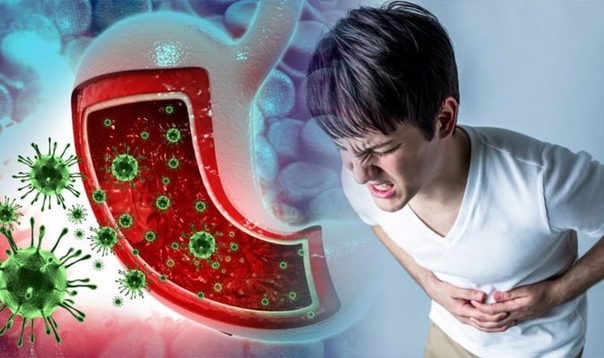
The Economic and Social Impact of Norovirus Outbreaks
Norovirus outbreaks have far-reaching consequences beyond individual health, affecting economies and social structures on local and global scales.
What are the economic costs associated with norovirus?
The economic burden of norovirus is substantial:
- Healthcare costs: Direct medical expenses for treating norovirus infections and related complications.
- Lost productivity: Workdays lost due to illness or caring for sick family members.
- Impact on industries: Sectors like hospitality, food service, and cruise lines can suffer significant losses during outbreaks.
- Public health expenditures: Resources allocated for outbreak control, surveillance, and prevention measures.
Studies estimate that norovirus costs the global economy billions of dollars annually, with a significant portion attributed to lost productivity.
How do norovirus outbreaks affect communities and institutions?
Norovirus outbreaks can have profound social and institutional impacts:
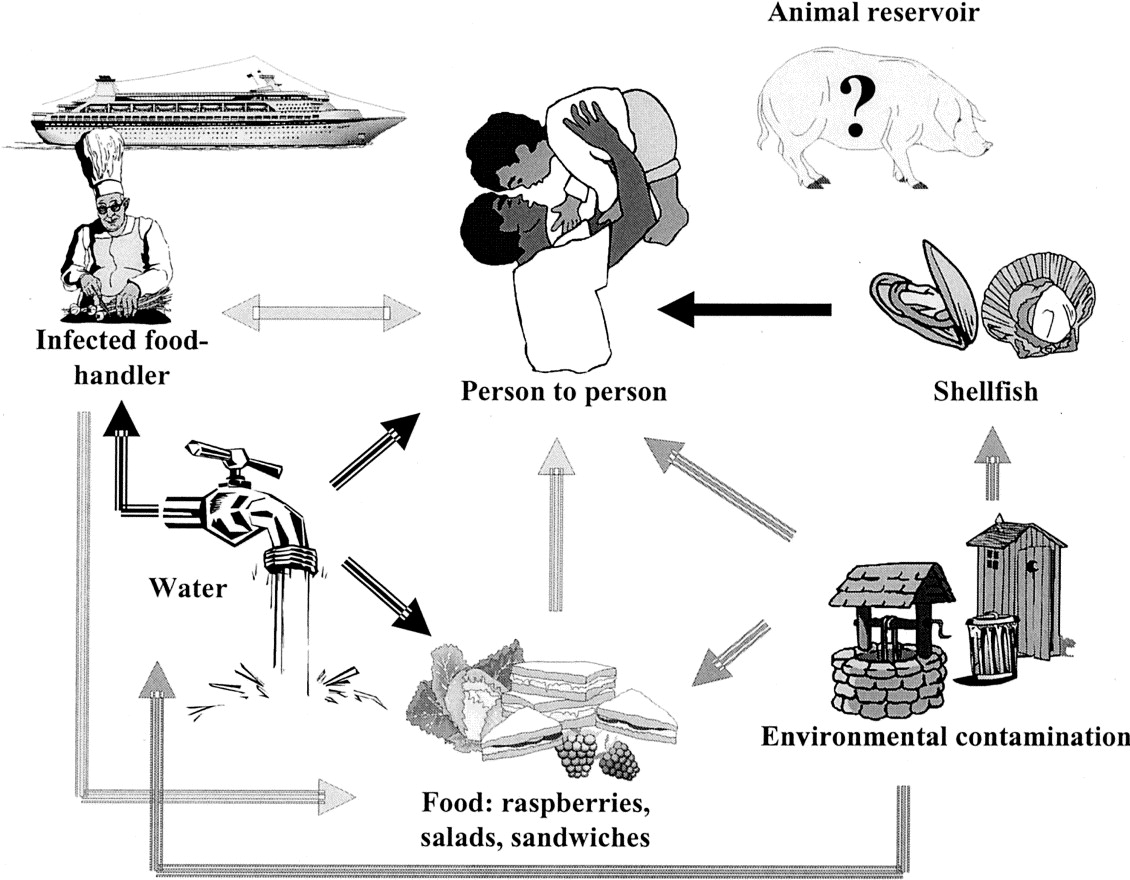
- School closures: Leading to disruptions in education and childcare arrangements.
- Healthcare system strain: Outbreaks can overwhelm hospitals and clinics, affecting overall healthcare delivery.
- Social distancing measures: Implementation of restrictions on gatherings and events to control spread.
- Reputation damage: Businesses and institutions associated with outbreaks may suffer long-term reputational harm.
- Community anxiety: Widespread outbreaks can lead to fear and anxiety within affected communities.
These impacts highlight the importance of effective prevention and control strategies at both individual and community levels.
Understanding the multifaceted nature of norovirus – from its symptoms and treatment to its broader societal impacts – is crucial for effective management and prevention. As research continues and public health strategies evolve, the goal remains to reduce the burden of this pervasive and challenging pathogen on individuals and communities worldwide.

14 Reasons You Have Chills
Body chills may mean you have a fever but there are other causes.
Facebook Icon.LinkedIn Icon.Pinterest Icon.Pocket Icon.
Last updatedFebruary 16, 2021
Facebook Icon.LinkedIn Icon.Pinterest Icon.Pocket Icon.
Chills can be uncomfortable. You may be wrapped in the heaviest down blanket, but still unable to get warm. You may feel cold and clammy, or you may be sweating with a fever and feeling overheated.
Chills, or shivering, can happen one time or they can be frequent. They can last a few seconds or as long as an hour. Sometimes chills can cause noticeable shaking movements; other times visible symptoms are minimal—you may just feel chilled to the bone.
Chills are your body’s attempt to raise your internal body temperature if you’re cold or sick. When your muscles involuntarily contract and relax, it generates heat. If you’re sick, chills can create more heat to help kill a virus or bacteria.
Chills can also be caused by menopause, low blood sugar levels, or when you’re experiencing profound emotions like shock, fear, or anxiety.
Extreme exertion—such as running a marathon—can also cause chills as your body tries to regulate temperature to avoid overheating.
1. Gastroenteritis (stomach flu)
Symptoms
Gastroenteritis, or stomach flu, is inflammation of your gastrointestinal organs, like your stomach and intestines. It is usually caused by infection with a virus, such as the rotavirus or norovirus. Most people recover on their own in a few days without any specific medical treatment beyond caring for themselves at home.
It is very important to stay hydrated as the body can lose a lot of water and electrolytes from throwing up or diarrhea. If you think you’re dehydrated or cannot keep any foods or liquids down, talk to your doctor. Your doctor may recommend hospitalization for monitoring and IV fluids for rehydration.
Also, gastroenteritis can sometimes mimic other more serious conditions such as appendicitis, which often has symptoms like fever, nausea and vomiting, and belly pain. Call your doctor when in doubt about the cause of your symptoms.
Call your doctor when in doubt about the cause of your symptoms.
2. Influenza (flu)
Sometimes patients tell me that they feel “silly” about bringing up questions about their chills. We are always here to help patients and hear their concerns. You mentioning your chills could be a vital step in first alerting us that something may be wrong with your health. —Dr. Petrina Craine
Symptoms
- Fever
- Cough
- Congestion
- Chills
- Headache
- Body aches
- Nausea, vomiting, diarrhea (especially in young children)
The flu is an infection of the respiratory tract (your lungs, nose, and mouth) caused by the influenza virus. There are different types of flu viruses. The reason you need to get a flu shot every year is because the version it protects against changes.
Most people who get the flu recover in a few days. Sometimes, it develops into pneumonia, which can be life-threatening, especially for the elderly or people with compromised immune systems.
If you are at risk of severe flu symptoms, see your doctor right away or go to urgent care. They may prescribe an antiviral medication. It can reduce how many days you are sick and the risk of complications.
Treating the flu is about taking care of your symptoms. You can take over-the-counter pain relievers like acetaminophen or ibuprofen. Get plenty of rest and drink lots of fluids.
It’s important to see a doctor if symptoms don’t get better or your fever lasts for more than 3 to 5 days.
3. Pneumonia
Symptoms
- Fever
- Chills
- Cough (which may also produce mucus/phlegm)
- Trouble breathing or increased breathing rate
- Fatigue
- Chest pain
- Nausea, vomiting, loss of appetite, and diarrhea (especially in younger children)
- Confusion (especially in the elderly)
Pneumonia is an infection in your lungs that is usually caused by viruses and bacteria. The infection irritates the air sacs, filling them with pus and other fluids.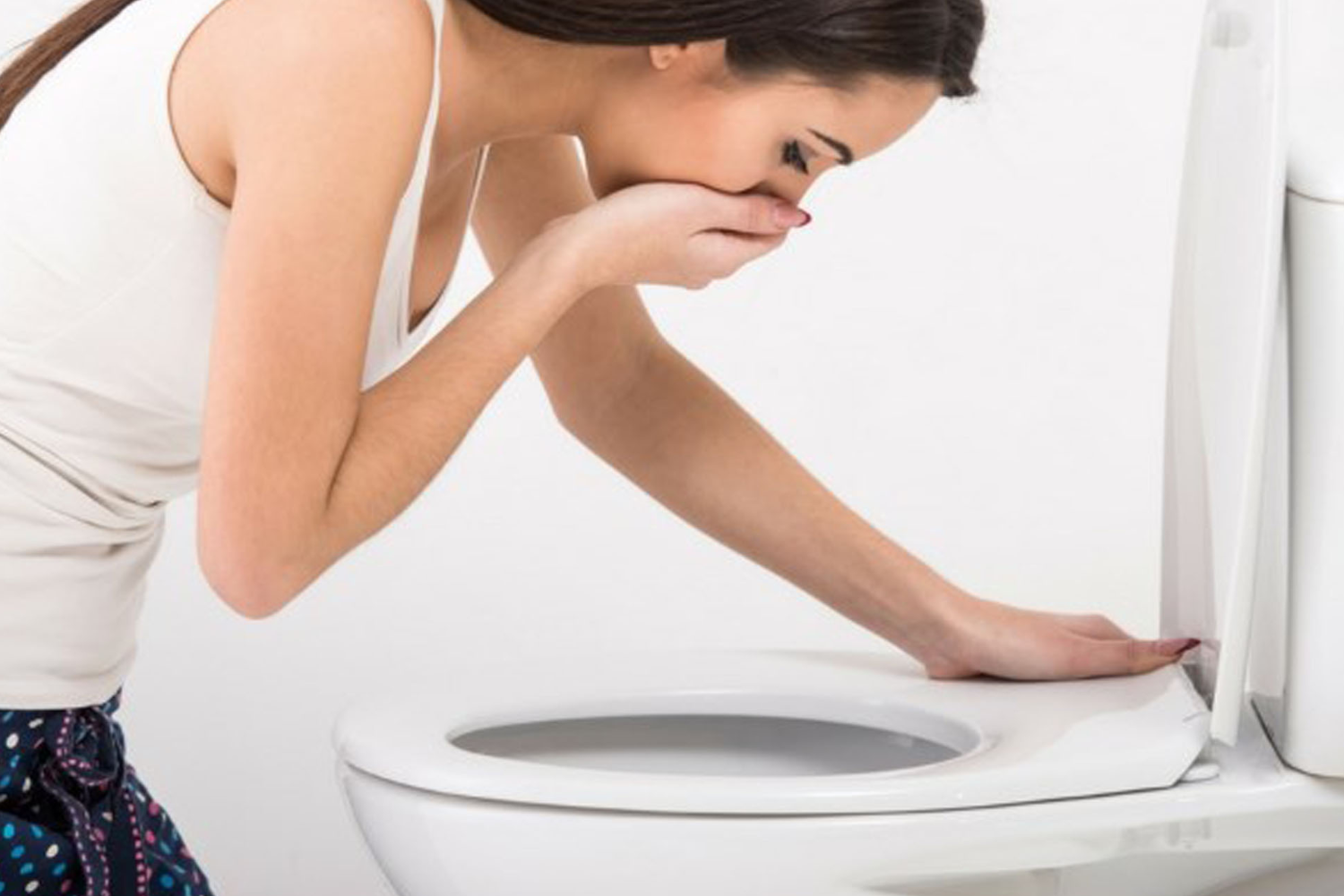 Colds, bronchitis, influenza, and other respiratory infections can become pneumonia as bacteria settles into your lungs.
Colds, bronchitis, influenza, and other respiratory infections can become pneumonia as bacteria settles into your lungs.
Pneumonia can be life-threatening, especially to the elderly or people with compromised immune systems.
Pneumonia is often diagnosed with a chest x-ray. Pneumonia caused by bacteria can be treated with antibiotics and many people can continue taking the medication as they recover at home.
You may have to be admitted to the hospital if you have low oxygen levels, severe dehydration, or other complications.
4. COVID-19
Symptoms
- Fever
- Loss of taste or smell
- Cough or congestion, which may produce mucus
- Runny nose
- Nausea, vomiting, or diarrhea
- Chest pain
- Fatigue
- Body aches
- Chills
- Headache
- Low oxygen levels on a pulse oximeter (oxygen measuring device)
COVID-19 is a highly contagious virus caused by a coronavirus, specifically the SARS-CoV-19. This virus infects the respiratory tract (including your nose, throat, sinuses, and lungs). Although it is a respiratory infection, it can also affect other organs including the brain, blood vessels, and the skin.
Symptoms are very similar to those seen in the flu and the common cold. Sometimes, cases of COVID-19 that begin with mild symptoms worsen and become life-threatening. COVID-19 is very contagious, even when people don’t have symptoms.
Rest and hydration can be important in treating symptoms and feeling better for people with mild cases of COVID-19. If you suspect COVID-19, monitor your symptoms and speak with your doctor about your condition.
They will give you additional at-home treatment plans. These may include over-the-counter medication, oxygen-monitoring devices, or prescription medication, like an inhaler. They can also advise you when to go to the hospital if your symptoms get worse.
5. Sinusitis
Symptoms
- Fever
- Runny nose
- Congestion
- Chills
- Facial pain or pressure
- Headache
- Cough that may produce mucus
- Foul-smelling breath or taste in mouth
The sinuses normally produce thin mucus to help trap foreign materials. When infected with viruses or bacteria, this fluid often increases and gets thicker—causing blockages. The infection affects the small air pockets in your forehead, nose, cheekbones, and in between your eyes. This is called sinusitis. Most sinus infections are caused by viruses, so antibiotics won’t help treat symptoms. If your symptoms last longer than 10 days or get worse after 5 to 7 days, you may have a bacterial infection. Your doctor may prescribe antibiotics.
When infected with viruses or bacteria, this fluid often increases and gets thicker—causing blockages. The infection affects the small air pockets in your forehead, nose, cheekbones, and in between your eyes. This is called sinusitis. Most sinus infections are caused by viruses, so antibiotics won’t help treat symptoms. If your symptoms last longer than 10 days or get worse after 5 to 7 days, you may have a bacterial infection. Your doctor may prescribe antibiotics.
Over-the-counter decongestants (such as pseudoephedrine) should be used with care. Taking beyond 3 days may lead to an increased risk of the congestion coming back. It can sometimes be even worse than before. Watch your symptoms. Hydrate (liquids like water and tea) to help relieve pressure.
6. Strep throat
Symptoms
- Fever
- Sore throat
- Painful swallowing
- Tender lymph nodes
- Swollen, red tonsils
- Chills
Strep throat is a throat infection caused by a bacteria called group A Streptococcus. Strep throat is contagious and more common in children than adults. A main symptom is a very sore throat that can make eating, talking, or swallowing difficult. Sometimes, you get strep throat with a rash that looks like sandpaper—this rash is known as scarlet fever.
Strep throat is diagnosed with a test. It is treated with antibiotics. If not treated, strep can turn into a more serious illness such as rheumatic fever. Antibiotics may make you feel better within a few days, but you must take the antibiotics for the full amount prescribed.
7. Urinary tract infection (UTI)
Symptoms
A urinary tract infection is an infection of your urinary tract that can affect the bladder, the urethra (the tube you urinate through), or the kidneys, which filter urine. This infection is commonly caused by bacteria but can also be caused by other germs like fungi. Pregnant women are prone to UTIs.
Most people who experience chills from a UTI have an upper urinary tract infection.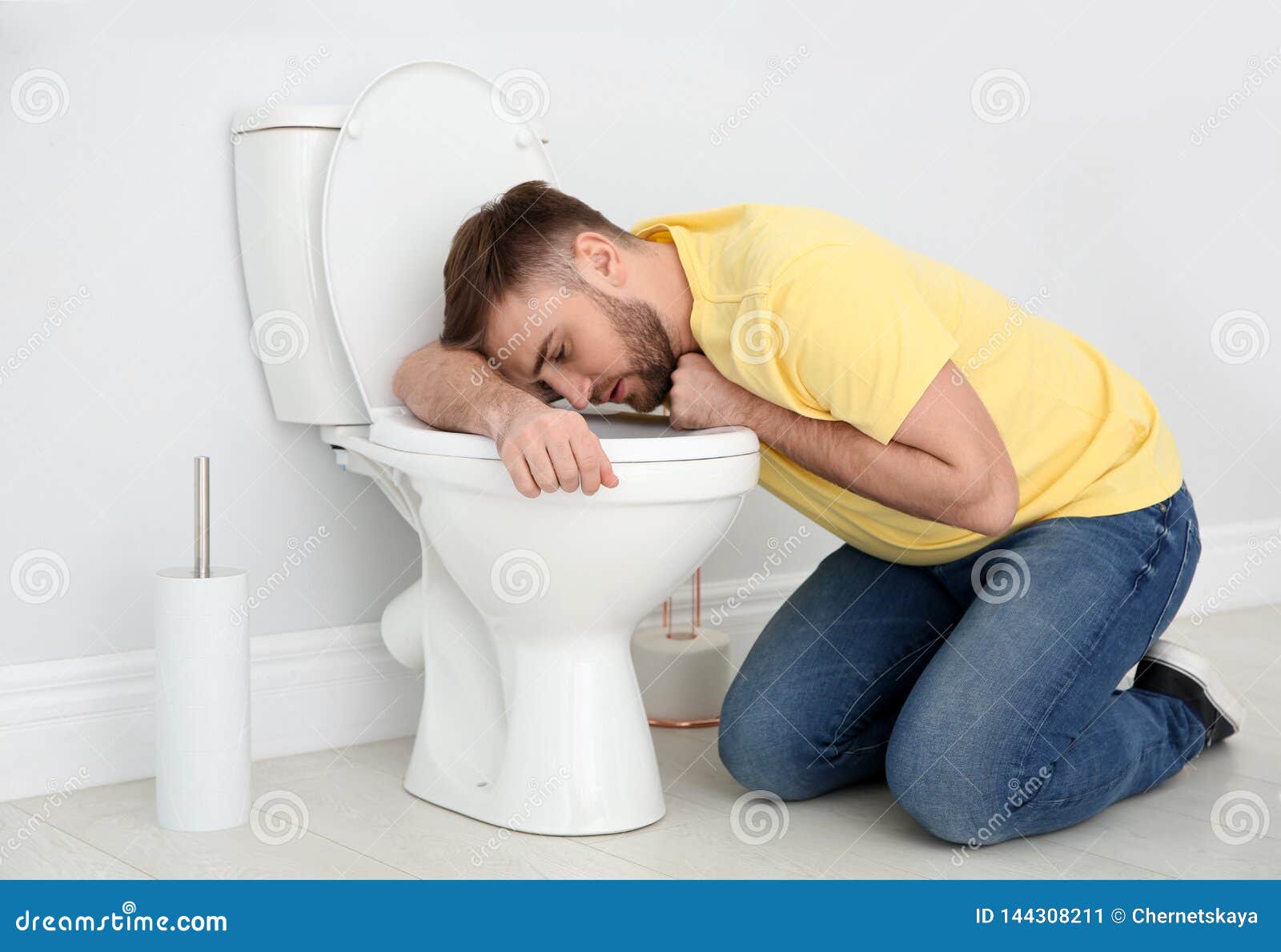 This is a sign that your kidneys and ureters (inner tube that passes urine from the kidneys to the bladder) are infected.
This is a sign that your kidneys and ureters (inner tube that passes urine from the kidneys to the bladder) are infected.
A UTI is diagnosed with a urine sample and can be treated with antibiotics. If not treated, a UTI can become very serious and infect your kidneys (pyelonephritis) and your bloodstream.
8. Common cold
Symptoms
- Runny nose
- Cough and congestion
- Low fever
- Chills and body aches (usually mild)
- Fatigue
A common cold is a viral infection of the respiratory tract (usually just your nose and mouth). Many types of viruses can cause it, but rhinoviruses are a common culprit.
Most people with the cold do not have severe symptoms and get better without complications. Over-the-counter medications, such as decongestants (such as pseudoepinephrine) and natural foods like honey (in ages 2 and older), may relieve symptoms like congestion, cough, and sore throat. Resting and staying hydrated can also help you feel better.
9. Medication side effect
Symptoms
- Chills
- Recently taking or changing medications
Recovering from anesthesia after a surgery can sometimes cause chills. This is from anesthetics affecting body temperature regulation, the cool temperature of operating rooms, and your body cooling down while under anesthesia.
Abruptly stopping certain medications or substances, such as benzodiazepines, alcohol (in a person who drinks large amounts of it daily), or opioids like heroin or oxycodone (in a person dependent on them) can cause chills.
Let your doctor know if you’re experiencing chills as a reaction to a new medication or if you’re withdrawing from a medication or substance.
10. Hypothyroidism
Symptoms
Hypothyroidism is a condition in which your thyroid is underactive. Thyroid hormones are involved in various body processes, a key one being metabolism. Low thyroid hormone levels increase your sensitivity to temperature changes and make you more likely to feel chilled.
Hypothyroidism can be caused by various conditions such as your immune system attacking your thyroid or a nutritional deficiency in iodine (an important mineral for thyroid hormone production).
Diagnosis is made with a blood test. Medications can be used to manage hypothyroidism.
11. Cancer
Symptoms
- Fever that comes and goes
- Unexplained weight loss
- Easily bruised skin
- Swollen lymph nodes
- Chills
- Fatigue
Cancer can be associated with a persistent low-grade fever, as well as chills. This is especially true for certain blood cancers like leukemia, lymphoma, or myeloma.
See your doctor If a fever doesn’t break or you have a continual low-grade fever or a low-grade fever that seems to come and go. You may also notice other symptoms, such as unexplained weight loss, swollen lymph glands, or fatigue. Blood cancers may also cause symptoms that include easily bruised skin or bleeding gums.
Tests can be used to diagnose cancer. Treatment depends on the type of cancer and how far it has progressed. Treatment may include chemotherapy, radiation, and/or surgery.
12. Autoimmune disease
Symptoms:
- Fatigue
- Swollen glands
- Joint pain
- Chills
- Digestive issues
- Skin or hair changes
Chills are often a symptom of various autoimmune diseases such as lupus and rheumatoid arthritis. Of those suffering from an autoimmune disease, nearly 80% are women. The reasons for this are not entirely clear, but hormonal changes (e.g. with estrogen and progesterone) and variations in sex chromosomes are thought to contribute to the large amount of women over men with autoimmune disorders.
Autoimmune disorders can have a range of symptoms and can be complicated to diagnose. Often, diagnosis is made by ruling out other causes. Treatment can include symptom management, medication, and immunotherapy.
13. Menopause
Symptoms:
Menopause is a period in a woman’s life in which her menstrual cycle ceases.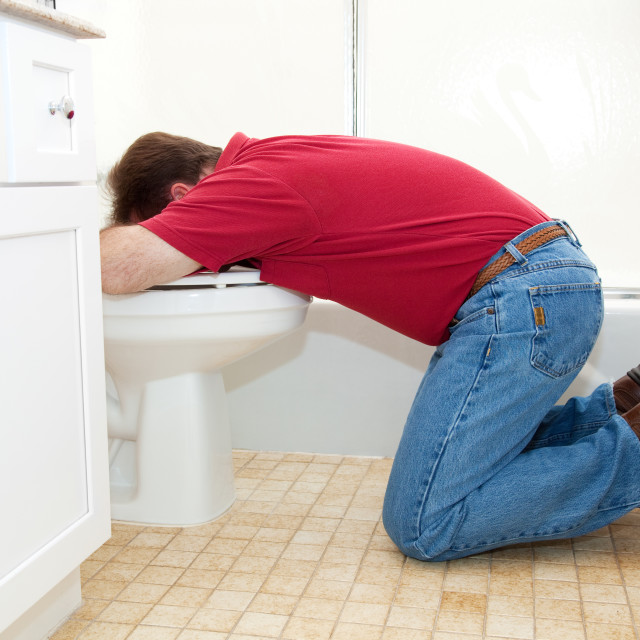 It usually occurs between the ages of 45 and 55. Women experience significant changes in hormones, which can affect their body’s temperature regulation. It typically can cause “hot flashes,” but it can also cause chills. Chills can occur after a woman is “cooling down” after a hot flash or in place of hot flashes, a phenomenon known as “cold flashes.”
It usually occurs between the ages of 45 and 55. Women experience significant changes in hormones, which can affect their body’s temperature regulation. It typically can cause “hot flashes,” but it can also cause chills. Chills can occur after a woman is “cooling down” after a hot flash or in place of hot flashes, a phenomenon known as “cold flashes.”
Your doctor may recommend blood tests to test hormone levels. Treatment can include symptom management with medications, including hormone-replacement therapy.
14. Anemia
Symptoms
- Fatigue
- Headache
- Feeling cold or chills
- Lightheadedness or dizziness
- Palpitations (irregular, rapid, or particularly strong heartbeat)
- Chest pain
- Shortness of breath
Anemia occurs when your body doesn’t have enough red blood cells to carry oxygen to your tissues. This affects nearly every process in the body, including temperature regulation. There are different causes of anemia, including problems with iron (e.g., losing blood from colon cancer or heavy menstrual cycles). Anemia is more common in women than men, and can be a particular problem for pregnant women due to increased nutritional needs during pregnancy.
A doctor may recommend iron supplements.
Other possible causes
Not all chills are necessarily negative. Some happen after deeply positive emotions, like after experiencing inspiring or moving music. This reaction is called “frisson.” —Dr. Craine
A number of conditions may also cause chills, though these are either rare or chills are not the defining symptom. These include extreme sunburn (rare), malaria, and tuberculosis.
When to call the doctor
- Chills persist even when you don’t have a fever.
- You have a cough, cold, or sore throat you can’t seem to shake.
- You experience body aches even when you haven’t exercised or exerted yourself.
- You have night sweats.
- You have a low-grade fever that doesn’t resolve, or seems to come and go.

- You notice hair or skin changes like your hair falling out.
- You’ve had unexplained weight loss.
- You experience fatigue regardless of how much you’ve slept.
- You experience constipation or diarrhea despite dietary changes.
Should I go to the ER for chills?
You should go to the emergency department if you have any of these signs:
Those with weakened immune systems (e.g., elderly adults, babies, people with cancer, people on medications that suppress the immune system, people with chronic conditions like diabetes, kidney failure, etc.) should visit an emergency room as chills could be a sign of a severe infection brewing.
Treatment
Sometimes patients look for goosebumps—when the hair on your body sticks up on skin—when they feel chills. They are not the same. Goosebumps can happen with chills, like if you are outside in the cold or if you are having a strong emotional reaction. But they are not always present with chills, such as chills with fever. —Dr. Craine
At-home care
- Medications to help reduce fever such as acetaminophen (Tylenol) and non-steroidal anti-inflammatory drugs (Advil, Motrin)
- Drink lots of fluids
- Warming up if you’ve been outside in cold temperatures
Other treatments you might have
- Medical testing to help identify the cause of chills
- IV hydration
- Hospital monitoring
- Medication review to ID any medications or interactions that may cause chills as a side effect
- Prescription medication or additional treatments to treat the underlying cause of chills
Share your story
Submit story
Request sent successfully
An error occurred, please try again
Was this article helpful?
Read this next
Slide 1 of 4
When fever spikes, it’s always a sign that something isn’t right. Likely reasons include that you’re fighting off a virus, flu or other infection, but there are also other possibilities.
 Here, how to treat fever at home and when to get medical attention.
Here, how to treat fever at home and when to get medical attention.Abdominal pain is usually a sign of a common illness or infection. Other causes include indigestion, a stomach ulcer, IBS, or food poisoning.
Influenza, or the flu, is a respiratory illness caused by a virus. It causes muscle aches, headache, fever, sore throat and makes you feel tired. Most people recover on their own.
The common cold is a frequent and regular viral infection of the nose and throat. Conditions are usually harmless and symptoms resolve within two weeks.
Gastroenteritis (Stomach Flu) | Gastrointestinal Society
Often incorrectly referred to as the ‘stomach flu’, gastroenteritis is a condition in which a person experiences temporary inflammation of the stomach and/or intestines. This inflammation leads to diarrhea and/or vomiting, as well as complications from these symptoms, such as abdominal pain, dehydration, and fatigue. Gastroenteritis is common, especially in children, but there are many different causes of this condition.
Symptoms
Gastroenteritis symptoms often begin suddenly and, in most types, last for one to three days in healthy adults, but can last longer in young children, the elderly, and those who have suppressed immune systems.
Most individuals with gastroenteritis will experience both diarrhea and vomiting, but some experience only one of these symptoms. Diarrhea is often very watery (type 7 on the Bristol stool chart), and can be bloody if the source of gastroenteritis is bacterial. Persistent diarrhea and vomiting can lead to abdominal pain, stomach cramps, loss of appetite, and dehydration. In young children, diarrhea and vomiting can cause an electrolyte imbalance, which is very dangerous and can lead to death if untreated.
In viral gastroenteritis, other symptoms such as fever, headache, body aches, chills, and fatigue can occur, leading to much of the confusion between the flu and gastroenteritis. The flu is a respiratory illness caused by infection with the influenza virus, and although many other symptoms are similar between the flu and gastroenteritis, the flu rarely causes vomiting and diarrhea.
The flu is a respiratory illness caused by infection with the influenza virus, and although many other symptoms are similar between the flu and gastroenteritis, the flu rarely causes vomiting and diarrhea.
Long-Term Effects
While the body typically clears an infection within a few days, sometimes there can be lasting effects. Gastroenteritis can modify the microbiome balance, leading to a decrease in the diversity and quantity of good bacteria in the gut, which can cause health complications in the long-term.1 One study found that approximately one in five of those affected with norovirus experienced significant microbiota alterations, although it is unclear how many of them will develop complications from this imbalance.2
One potential outcome of gastroenteritis is a type of irritable bowel syndrome (IBS) known as post-infectious IBS. Studies have found that post-infectious IBS affects between 5-32% of those who experience gastroenteritis.3 However, the prognosis is good for this type of IBS, with symptoms typically gone soon after developing, without need for treatment. In cases of bacterial gastroenteritis, it can take a few years to resolve, but if it’s caused by viral infection, then symptoms are usually gone within a few months.3 Although this type of IBS is uncomfortable, it does not lead to any other adverse affects, and doesn’t increase the risk of other diseases or disorders after symptom resolution.
Some other potential, but rare, complications from gastroenteritis include developing ulcerative colitis, aortic aneurysm, or reactive arthritis in the months after the infection.4
Causes
Viral, bacterial, or parasitic infections cause most cases of gastroenteritis. These are communicable infections, which can be spread through contact with another person who is sick, contact with an item recently touched by someone with infectious gastroenteritis, or the consumption of contaminated food or water. Many individuals develop gastroenteritis while travelling, especially in developing countries.
Many individuals develop gastroenteritis while travelling, especially in developing countries.
The most common cause of gastroenteritis is norovirus. When someone gets the ‘stomach flu’, it is typically an infection with one of the viruses in the norovirus family. Norovirus is highly contagious, and is often responsible for sickness outbreaks on cruise ships, in nursing homes, and in schools. Symptoms typically last only a day or two.5
Until recently, infection with rotavirus was the most common cause of gastroenteritis in children. Symptoms last for up to a week, and can be very severe. In young children, particularly those under five years-of-age, gastroenteritis from rotavirus can lead to serious complications from dehydration if untreated, and can even be fatal. However, since 2006, there have been effective vaccines for this virus, which have drastically reduced the incidence of children with rotavirus infection and gastroenteritis hospitalized in Canada. For more information on the rotavirus vaccine, see the article Rotavirus Vaccine Success.
Bacteria cause many cases of foodborne gastroenteritis. These include infections with E. coli and various species within the salmonella, campylobacter, shigella, staphylococcus, and yersinia genera. For some of these, the bacteria themselves cause gastroenteritis, but in others, the bacteria produce toxins that damage the digestive tract and cause gastroenteritis. Food products purchased from stores could be tainted with harmful bacteria, and food prepared at home or at a restaurant with inadequate sanitation protocols could become contaminated. These bacteria can also spread from person-to-person.
Protozoa such as Giardia lamblia and Cryptosporidium parvum can also cause gastroenteritis. Most individuals who become infected with these parasites do so from consuming contaminated water. They also spread from contact with an infected individual. These types of infections are more common when travelling in developing countries.
These types of infections are more common when travelling in developing countries.
Antibiotics might increase the risk of gastroenteritis in susceptible populations by disturbing the balance of gut microbiota.
Prevalence
Gastroenteritis affects millions of Canadians each year. While it is difficult to accurately count the number affected, approximately four million Canadians, or about one in eight, get food-borne gastroenteritis each year. Of these, 11,600 are hospitalized and 238 cases result in death from complications.6
Diagnosis
Your physician will likely make a diagnosis of gastroenteritis based off symptoms alone. They might request a stool test to check for the presence of certain viruses, bacteria, and protozoa in order to determine the source of the gastroenteritis.
Prevention and Management
Treatment will vary depending on the source of gastroenteritis. However, since some form of highly contagious agent usually causes gastroenteritis, maintaining a healthy hand-washing routine, and staying home when sick, can help avoid the spread of the illness and prevent community outbreaks.
There are no medications available to treat viral gastroenteritis. Instead, treatment focuses on symptom management and preventing complications. In the rare cases of bacterial gastroenteritis, an antibiotic might be useful.
While travelling, drink bottled water and beverages if possible – and make sure they are sealed before you open them – and only consume local water after boiling it for three minutes. Brush your teeth with bottled water and keep your mouth closed while showering. Avoid raw fruits and vegetables unless they have a skin you can peel (bananas, citrus, avocado, etc.). Stick to well cooked foods while eating out, and don’t consume any ice or undercooked meat or fish. Try to avoid street vendors, which are more likely to be contaminated than restaurants. As with gastroenteritis at home, regular hand-washing is important.
The rotavirus vaccine is an effective means of preventing children from developing this dangerous form of gastroenteritis. The National Advisory Committee on Immunization recommends that infants receive their first dose of rotavirus vaccine between 6 weeks and 15 weeks-of-age, and their final dose before 32 weeks-of-age.7 Depending on the brand, they will need 2-3 doses of vaccine, which need to be at least 4 weeks apart.7
Toxic Shock Syndrome – NORD (National Organization for Rare Disorders)
TEXTBOOKS
Mandell GL, et al., eds. Mandell, Douglas, and Bennett’s Principles and Practice of Infectious Diseases. 5th ed. Philadelphia, PA: Churchill Livingstone; 2000:2080-82, 2110-13.
Wyngaarden JB, et al., eds. Cecil Textbook of Medicine. 19th ed. Philadelphia, PA: W.B. Saunders Company; 1992:780, 1629, 1650, 2301-02.
Beers MH, et al., eds. The Merck Manual. 17th ed. Whitehouse Station, NJ: Merck Research Laboratories; 1999:1149-50, 1152.
Behrman RE, et al., eds. Nelson Textbook of Pediatrics. 15th ed. Philadelphia, PA: W.B. Saunders Company; 1996:749-50.
JOURNAL ARTICLES
Baxter F, et al. Severe group A streptococcal infection and streptococcal toxic shock syndrome. Can J Anaesth. 2000;47:1129-40.
Givner LB. Invasive disease due to group A beta-hemolytic streptococci: continued occurrence in children in North Carolina. South Med J. 1998;91:333-37.
Fishman G, et al. Toxic shock syndrome. Harefuah. 1997;132:622-24, 679.
Fichtenbaum CJ, et al. Ehrlichiosis presenting as a life-threatening illness with features of the toxic shock syndrome. Am J Med. 1993;95:351-57.
Strausbaugh LJ. Toxic shock syndrome. Are you recognizing its changing presentations? Postgrad Med. 1993;94:107-08, 111-13, 117-18.
Kain KC, et al. Clinical spectrum of nonmenstrual toxic shock syndrome (TSS): comparison with menstrual TSS by multivariate discriminant analyses. Clin Infect Dis.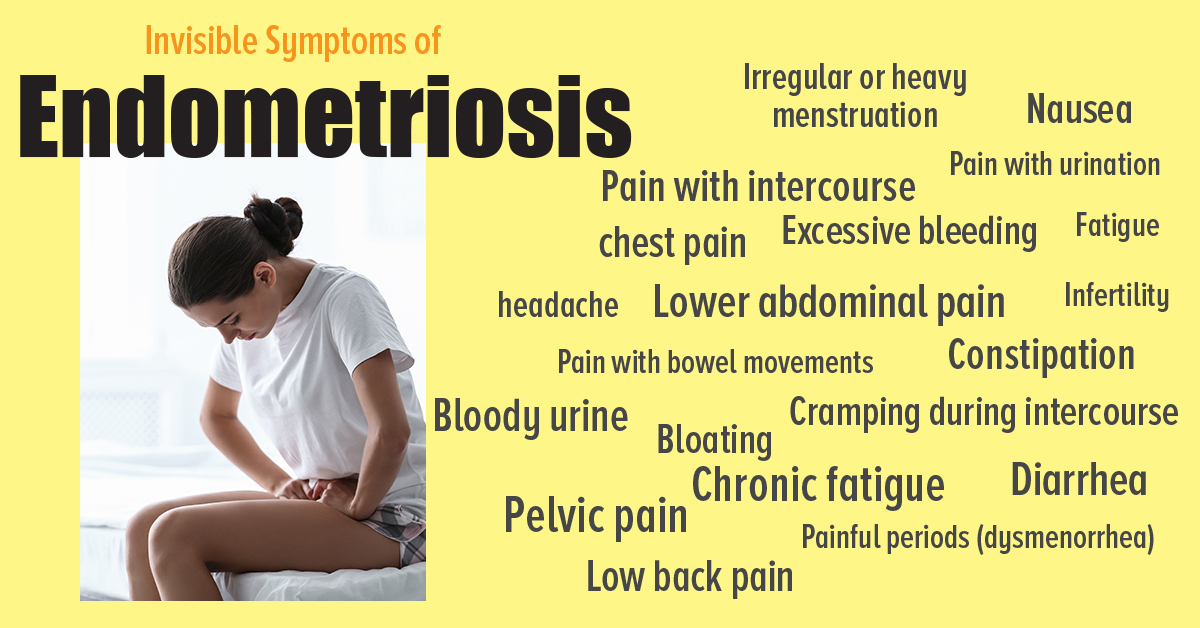 1993;16:100-06.
1993;16:100-06.
Panina-Bordignon P, et al. Identification of HLA-DR alpha chain residues critical for binding of the toxic shock syndrome toxin superantigen. J Exp Med. 1992;176:1779-84.
McCahill PD, et al. Toxic shock syndrome: a complication of continent urinary diversion. J Urol. 1992;147:681-82.
Schuchat A, et al. Toxic shock syndrome and tampons. Epidemiol Rev. 1991;13:99-112.
Givner LB, et al. Apparent increase in the incidence of invasive group A beta- hemolytic streptococcal disease in children. J Pediatr. 1991;18:341-46.
Todd JK. Therapy of toxic shock syndrome. Drugs. 1990;39:856-61.
Allen ST, et al. Toxic shock syndrome associated with use of latex nasal packing. Arch Intern Med. 1990;150:2587-88.
Bryner CL, et al. Recurrent toxic shock syndrome. Am Fam Physician. 1989;39:157-64.
Rizkallah MF, et al. Toxic shock syndrome caused by a strain of staphylococcus aureus that produces enterotoxin C but not toxic shock syndrome toxin-1. Am J Dis Child. 1989; 143:848-49.
Prechter GC, et al. Postinfluenza toxic shock syndrome. Chest. 1989;95:1153-54.
Kass EH, et al. On the pathogenesis of toxic shock syndrome. Rev Infect Dis. 1987;9:S482-89.
Osterholm, MT, et al. Tri-state toxic-shock syndrome study. I. Epidemiologic findings. J Infect Dis. 1982;145:431-40.
Davis JP, et al. Toxic-shock syndrome: epidemiologic features, recurrence, risk factors, and prevention. New Engl J Med. 1980;303:1429-35.
Todd J, et al. Toxic-shock syndrome associated with phage-group-I staphylococci. Lancet. 1978;2:1116-18.
Diverticulitis: Signs, Symptoms, and Complications
In many cases, diverticula cause no symptoms but occasionally they can become infected and/or inflamed, which is a condition called diverticulitis.
The most common symptom of diverticulitis is stomach pain (usually on the left side), but it can also cause a change in bowel habits (constipation or diarrhea), fever, and nausea or vomiting. Luckily, even with symptoms, the majority of cases of diverticulitis are not complicated and can be treated at home. However, according to a 2010 study around 27 percent of the time there can be complications that require hospitalization.
Luckily, even with symptoms, the majority of cases of diverticulitis are not complicated and can be treated at home. However, according to a 2010 study around 27 percent of the time there can be complications that require hospitalization.
© Verywell, 2018
Frequent Symptoms
The abdominal pain is the most common symptom of diverticulitis and it is usually constant and goes on for several days.
In most cases, the diverticula form in the last part of the large intestine, which is called the sigmoid colon. It is located on the left side of the abdomen, which is why diverticulitis may lead to feeling discomfort or pain primarily on that side. However, in a minority of cases, some people may have pain on the right or on both sides of the abdomen if there are diverticula in other parts of the colon.
Other common symptoms can include:
- chills
- constipation
- cramping
- bloating
- diarrhea (occasionally)
- gas
- fever
- lack of appetite
- nausea
- vomiting
Rare Symptoms
Bleeding with diverticulitis isn’t common but can occur in some cases. If there are complications from the diverticulitis, such as a fistula, abscess, or bowel perforation, there can be other symptoms caused by those conditions. Symptoms of diverticulitis that are less common can include:
- bladder irritation or urinary symptoms
- blood in the stool
- rectal bleeding
Complications
While they are not common, there are several different complications that may occur along with diverticulitis.
Abscess
An abscess is a bacterial infection that causes a pocket of blood and pus to form. Abscesses associated with diverticulitis may cause fever and abdominal pain. They are treated with antibiotics and/or drainage.
Fistula
A fistula is a tunnel that forms in the body and connects either two organs or an organ and the skin.
Symptoms of a fistula (which depends on location) can include a break in the skin, swelling, pain, passing air while urinating, passing stool through the vagina, a visible skin break, or drainage from the area.
A fistula may be treated with surgery or with the use of a seton, which is a thread that is gradually tightened until the fistula is closed.
Bowel Obstruction
A bowel obstruction is a blockage in the intestine which prevents the passage of stool. When diverticulitis leads to a bowel obstruction the symptoms can include abdominal pain, distention, and bloating; constipation or diarrhea; thin stools; and nausea and vomiting.
An obstruction might be treated in the hospital through the use of a nasogastric (NG) tube or in some cases may require surgery.
Perforation
A perforation is a hole in the colon. It is a serious condition that requires treatment immediately in order to prevent complications such as peritonitis, which is a potentially fatal infection.
The symptoms of a perforation can include severe abdominal pain, fever, chills, bleeding from the rectum, and nausea and vomiting.
When to See a Doctor
Diverticulitis can be managed at home, but the symptoms always require a trip to the doctor or the hospital for evaluation and direction for treatment at home or in the hospital.
Abdominal pain should prompt a call to a doctor, but when it is severe and accompanied by other symptoms such as fever, nausea, vomiting, and rectal bleeding it is a reason to go to the emergency department right away or even to call 911.
Diverticulitis Doctor Discussion Guide
Get our printable guide for your next doctor’s appointment to help you ask the right questions.
Email the Guide
Send to yourself or a loved one.
Sign Up
This Doctor Discussion Guide has been sent to {{form. email}}.
email}}.
There was an error. Please try again.
In most cases diverticulitis is uncomplicated, but with severe symptoms there is a risk of complications that can be serious and life-threatening. Even if symptoms are thought to be from diverticulitis because it has happened before, calling a doctor is important in order to get the correct treatment and to ensure that more serious problems aren’t going to occur.
Syndrome – About GI Motility
Dietary and Nutritional Recommendations for Patients with Dumping Syndrome (Rapid Gastric Emptying)
Dumping syndrome describes a collection of symptoms that occurs when food is emptied too quickly from the stomach. When this happens, the small intestine is filled with undigested food that is not adequately prepared to permit efficient absorption of nutrients.
Dumping syndrome is most commonly seen after a gastrectomy – the surgical removal of all or part of the stomach, usually for ulcer disease. It is now recognized that other types of patients, including those with symptoms suggestive of functional dyspepsia, may have rapid gastric emptying.
Symptoms
The symptoms of dumping syndrome include:
- Nausea
- Abdominal cramps
- Diarrhea
- Dizzy spells
- Weakness
- Cold sweats
Symptoms occur either with or after eating. The symptoms are often divided into “early” or “late” symptoms.
- Early symptoms begin during or right after a meal. These include nausea, vomiting, bloating, cramping, diarrhea, dizziness, and fatigue.
- Late dumping symptoms occur 1-3 hours after eating and include hypoglycemia, weakness, sweating, and dizziness.
People with dumping syndrome often have both types of symptoms.
Diagnosis
The diagnosis of dumping syndrome is based primarily on the development of symptoms in a person with a history of stomach surgery. Tests may be needed to exclude other conditions that have similar symptoms.
Tests may be needed to exclude other conditions that have similar symptoms.
These tests may include blood tests, upper endoscopy, and/or gastric emptying test. Gastric emptying demonstrates rapid stomach emptying, especially in early scans taken one half and one hour after eating the test meal which shows nearly complete stomach emptying.
Treatment
Medical management of dumping symptoms involves dietary changes, and at times, the use of medications.
A change in diet is tried in most cases as the initial treatment. In moderate to severe cases, medications are taken to slow the stomach emptying and movement of food in the gastrointestinal (GI) tract. Rarely, doctors recommend surgery.
The following suggestions may help guide your eating to maximize your nutrition status and minimize symptoms of dumping:
Basic Dietary Guidelines for Dumping Syndrome
- Eat smaller, more frequent meals. Eating 5 or 6 small meals more often will allow you to eat the equivalent of 3 regular meals without feeling full too fast. Eat slowly and chew all foods thoroughly. Sit upright while eating.
- Solid foods account for most episodes of dumping. Symptoms are triggered more by solid food that requires breakdown in the stomach such as a piece of steak or pork chop rather than ground meat that is already broken down by the butcher.
- Limit fluid consumption during meals. Drink liquids 30-60 minutes before or after meals instead of with meals.
- Avoid nutrient-rich drinks since dumping syndrome is easily triggered by any rich emulsions such as a liquid nutritional supplement or a milk shake.
- Eat fewer simple sugars. Foods high in simple sugar should be avoided because they pass through your stomach quickly and may cause diarrhea and cramping. Avoid or limit high sugary foods and beverages including the following examples: Kool-Aid, fruit juices/drinks, soda, cakes, pies, candy, doughnuts, cookies.
- Eat more complex carbohydrates such as whole grains, pastas, potatoes, rice, breads, bagels, unsweetened cereals, etc.

- Eat more foods high in soluble fiber. Foods high in soluble fiber slow stomach emptying and prevent sugars from being absorbed too quickly. The following examples are foods high in soluble fiber: apples, beets, Brussels sprouts, carrots, oats, spinach, pears.
- Try increasing the amount of fats in your diet. Fats slow the stomach emptying and may help to prevent dumping syndrome from developing. Butter, margarine, mayonnaise, gravy, vegetable oils, salad dressings, and cream cheese are good choices; use some at all meals and snacks (for those trying to lose weight, an individual meal plan can be designed with a registered dietitian).
- Increase the protein in your diet. Eat a protein containing food with each meal. Examples of high protein foods include the following: Eggs, meat, poultry, fish, milk, yogurt, cottage cheese, cheese, peanut butter.
- If milk causes distress, try lactose-free milk. Milk and milk products are often not tolerated; reduce or avoid consumption if this it true for you. It will be important to ensure that adequate calcium and vitamin D are eaten in the diet.
If you have difficulty maintaining your weight, ask to meet with a registered dietitian (RD) to help you with a meal plan. One possibility is to drink a nutritional supplement for extra calories; unfortunately, some of these may worsen symptoms. If tried, drink slowly to prevent symptoms.
Most people with dumping syndrome have relatively mild symptoms and respond well to dietary changes. In people with low blood pressure after meals (feeling lightheaded or sweaty), lying down for 30 minutes may help.
For persons that do not respond to the above dietary treatment, medications are sometimes given. The drug acarbose delays carbohydrate absorption and has been shown to help patients with late dumping. Another drug, octreotide, has been used with some success also. Octreotide is a synthetic form of somatostatin, a naturally occurring hormone in the body.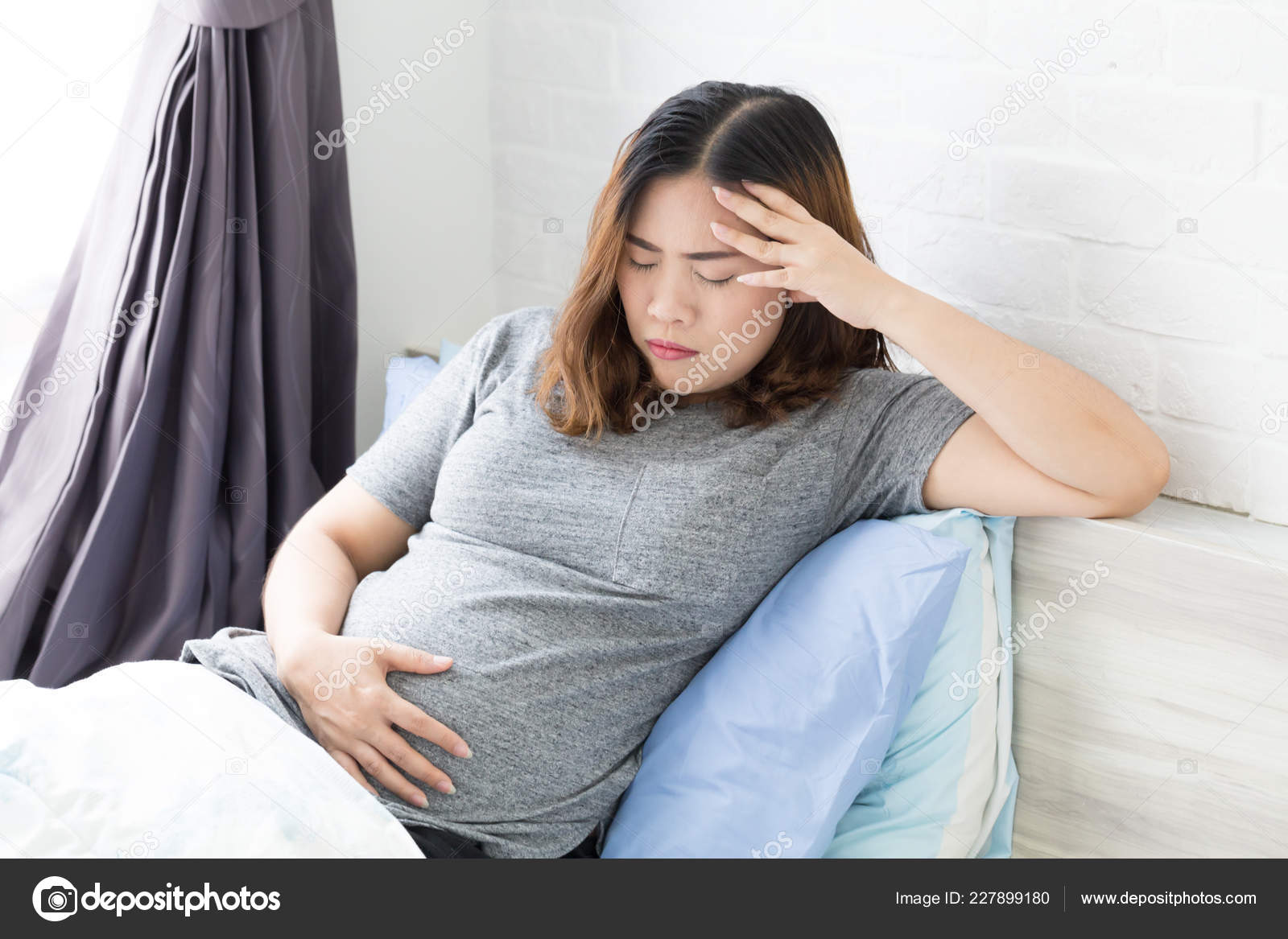 Octreotide and somatostatin delay stomach emptying and exert a strong inhibitory effect on the release of insulin and several gut-derived hormones. Octreotide is a therapy used sparingly since this treatment significantly impairs digestion.
Octreotide and somatostatin delay stomach emptying and exert a strong inhibitory effect on the release of insulin and several gut-derived hormones. Octreotide is a therapy used sparingly since this treatment significantly impairs digestion.
There are several newer agents that are also beginning to be used in attempt to slow gastric emptying (many of these are also used to treat patients with diabetes). In people who do not respond to medical treatment, surgery is sometimes considered.
More dietary information may be found at:
Adapted from IFFGD Publication: Dietary and Nutritional Recommendations for Patients with Dumping Syndrome (Rapid Gastric Emptying) by Carol Rees Parrish, RD, MS, Nutrition Support Specialist, University of Virginia Health System; Henry C. Lin, MD, Chief, Gastroenterology Section, New Mexico VA Health Care System and Professor of Internal Medicine, University of New Mexico; and Henry Parkman, MD, Professor of Medicine, Temple University School of Medicine, Philadelphia, PA.
Coronavirus symptoms go beyond fever and cough
Fever, cough, shortness of breath.
Those are the three symptoms prominently listed on the Centers for Disease Control and Prevention’s website under coronavirus symptoms.
But as case counts continue to rise in the United States and across the world, it’s clear that COVID-19, the disease caused by the virus, causes a much wider range of symptoms. The more detailed descriptions of the illness that are emerging show how doctors and researchers are still learning about the disease, which was first reported just three months ago, in real time.
COVID-19 can begin in similar ways among patients, regardless of a person’s age or health status.
Full coverage of the coronavirus outbreak
Very often, extreme fatigue hits first.
Hedy Bauman, 74, was so weak she could barely make it home from a short walk to the store. Reading a few pages of the newspaper was exhausting.
“My bathroom is maybe 15 steps from my bed,” Bauman, of Silver Spring, Maryland, told NBC News. “I wasn’t sure I could get from the bathroom to my bed.” She developed chills, but no fever.
Bauman’s doctor said her symptoms were consistent with what physicians are learning about other coronavirus cases, though they are still waiting for the results from Bauman’s COVID-19 test.
Download the NBC News app for full coverage of the coronavirus outbreak
Brendan McLaughlin, 28, felt lightheaded and weak before the fever, chills and body aches began.
McLaughlin went to the emergency room at Holy Name Medical Center in Teaneck, New Jersey, where he works as a security guard, thinking maybe he had the flu.
That test was negative, but a test for the coronavirus was positive. McLaughlin said he’d never felt so sick in his life.
“I’d been healthy,” McLaughlin said. “I try to eat right. I take care of myself.”
One of the first major reports on coronavirus symptoms was published by the World Health Organization in February, following their mission to China. That report, based on nearly 56,000 cases there, found the most common symptoms were fever (88 percent) and dry cough (68 percent). Nearly 40 percent of those patients experienced fatigue. Shortness of breath, stomach issues and weakness were less common.
Related
Since that report, other symptoms related to COVID-19 have emerged.
Many patients who’ve either tested positive for the coronavirus, or have been told by their physicians to assume they have it, also develop a headache and sore throat. Others become sick to their stomach with nausea or diarrhea.
Some patients say they have no interest in eating. Many report they’re losing their senses of taste and smell, the British Rhinological Society said recently.
Just this week, a small study published in JAMA Ophthalmology added another potential COVID-19 warning sign: pink eye, also known as conjunctivitis.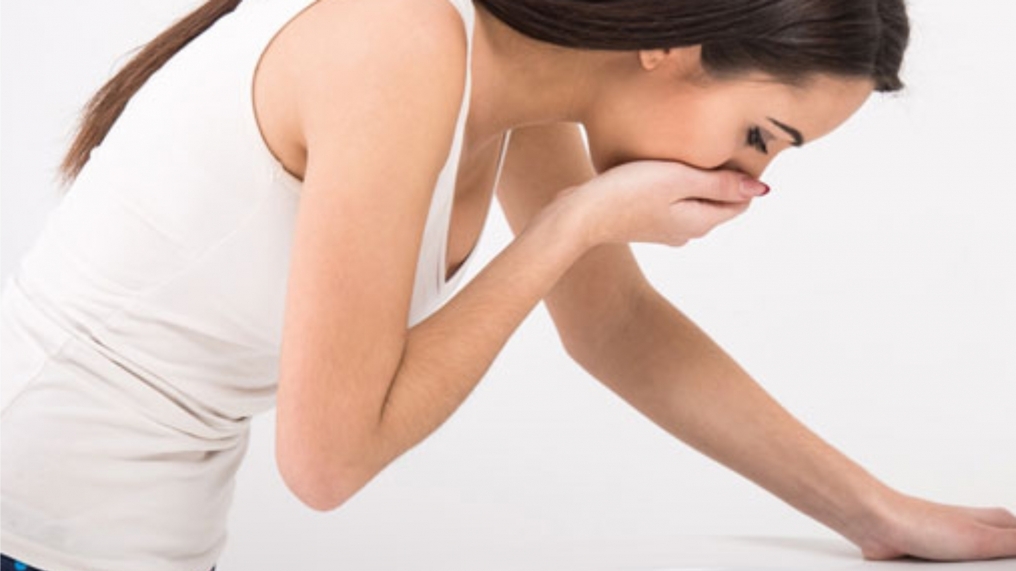 A third of the 38 patients in the report had the inflammatory eye condition.
A third of the 38 patients in the report had the inflammatory eye condition.
But it’s also becoming more clear that some infected people spreading the virus don’t have any symptoms at all.
Contagious before symptoms
Dr. Robert Redfield, director of the CDC, told NPR this week that as many as a quarter of patients are asymptomatic. And a report published by the CDC Wednesday found evidence that infected people can spread the virus before they develop symptoms, although it seems to be rare.
The phenomenon is called “presymptomatic transmission,” which is also a known way that the flu spreads.
The CDC report was based on 243 coronavirus cases in Singapore. Researchers there carefully traced all of individuals that patients had been in contact with before becoming ill.
They ultimately determined 6.4 percent of transmissions in the study were from presymptomatic patients.
Follow NBC HEALTH on Twitter & Facebook.
Erika Edwards
Erika Edwards is a health and medical news writer and reporter for NBC News and “TODAY.”
Rosemary Guerguerian, M.D.
Dr. Rosemary Guerguerian is a medical fellow with the NBC News Health and Medical Unit.
What are other coronavirus symptoms besides cough and fever?
Fever, cough and shortness of breath are the most common symptoms of coronavirus, but what are some less common signs you may have the virus?
Fatigue
Up to 44 percent of hospitalized COVID-19 patients reported they were exhausted and fatigued, according to the Journal of the American Medical Association.
A 54-year-old woman told the Washington Post her first noticeable signs of catching the virus were dizziness and fatigue. She found out a few days later she had COVID-19.
Fatigue is also a symptom of influenza or the common cold, so you may not have COVID-19 if it’s one of your only symptoms.
Body aches
One of the first signs Elizabeth Schneider, of Seattle, had when she became ill was body aches, along with a slight fever and a headache, she told USA Today. Her symptoms later progressed before finding out she had coronavirus.
Her symptoms later progressed before finding out she had coronavirus.
Body aches were the worst symptom for 48-year-old California woman Cara Vidano, who suspects she has the virus, according to the Press Democrat. Her 53-year-old boyfriend has a confirmed COVID-19 case.
“Our legs were so sore,” she told the Press Democrat. “It was like we had run a long-distance race.”
A Los Angeles man who got the virus while on a ski trip in Italy told CBS LA that COVID-19 caused the worst body aches he’s ever had.
Diarrhea
A study by the American Journal of Gastroenterology showed nearly half of hospitalized COVID-19 patients said their primary complaint were digestive issues, including diarrhea.
Patients with digestive symptoms had a higher risk of death, the study found.
A New Jersey man who tested positive told Vice he didn’t have a cough, but one of his symptoms was diarrhea. He also suffered aches, pains and dizziness.
Stomach cramps and vomiting are other gastrointestinal problems that could mean you have coronavirus, Dr. Ajay Kumar of Hartford HealthCare told the CTPost.
Loss of smell or taste
An association of British ear, nose and throat doctors said there were “significant numbers” of people with coronavirus in China, Italy and South Korea who also experienced anosmia, which is the loss of smell.
Utah Jazz player Rudy Gobert was among the positive cases who said he lost his smell and taste. He said after testing positive he hadn’t “been able to smell anything for the last 4 days.”
Dr. Claire Hopkins, a surgeon with the British association, said the loss of smell and taste was more common in younger patients who often did not have the significant symptoms.
The virus could cause loss of smell or taste because it originates in the nasal cavity, according to Bloomberg.
Runny nose
Having a runny nose isn’t a definitive symptom, but it could mean you have the virus if other symptoms are also present, according to the World Health Organization.
Nasal congestion was only shown in one out of every 20 coronavirus patients in a Chinese report, Dr. Kristine Arthur with Memorial Care Medical Group told Healthline.
Another lesser known coronavirus symptom is itchy, red eyes.
Related stories from Miami Herald
90,000 American doctors named the early symptoms of coronavirus :: Society :: RBC
Photo: Go Nakamura / Getty Images
Loss of appetite and nausea in patients with coronavirus infection may appear before respiratory symptoms.This is stated in a message on the website of the Mayo Clinic in the United States.
“COVID-19 can cause mild gastrointestinal symptoms including loss of appetite, nausea, vomiting, and diarrhea. These symptoms can last as little as one day, ”the scientists said.
According to them, some patients with coronavirus have diarrhea and nausea earlier than fever and respiratory symptoms.
The WHO predicted the continuation of the mutation of the coronavirus
Earlier, British scientists reported that several more symptoms may indicate infection with coronavirus. According to them, we are talking about muscle pain, fatigue and blisters on the legs.
According to them, we are talking about muscle pain, fatigue and blisters on the legs.
90,000 HIV symptoms, infection and spread
HIV (Human Immunodeficiency Virus) is the virus that causes AIDS. HIV attacks the immune system by destroying white blood cells that help the body fight infections and disease. Testing is the only reliable way to tell if you have HIV. The following are symptoms that can serve as a warning that you have an infection.
Method 1 of 3: Identifying Early Symptoms
1
Determine if you are experiencing severe fatigue for no reason. Fatigue can be a symptom of a wide variety of diseases, and is also manifested as a symptom in HIV-infected people. This symptom should not cause you more concern if it is the only one that you feel, but it is worth considering in the future.
- – Severe fatigue is not a feeling when you just want to sleep.Do you feel tired all the time, and even after a good night’s sleep. Do you go to naps during the day more often than usual and avoid strenuous activity because you feel exhausted. This type of fatigue is cause for concern.
- – If this symptom persists for more than a few weeks or months, you should be tested to rule out HIV.
2
Monitor fever or increased night sweats. These symptoms often occur in the early stages of HIV, during the so-called primary or acute stage of HIV infection. Again, many people do not have these symptoms, but those who did have them usually feel them 2-4 weeks after they acquired HIV.
- – Fever and increased sweating are symptoms of the flu and common cold. If it is a cold season or a flu epidemic, you may have these diseases.
- – Chills, muscle pain, sore throat and headache are also symptoms of the flu and colds, but can also be signs of early HIV infection.
3
Check for swollen glands in the throat and lymph nodes in the armpits and groin. Lymph nodes become swollen as a result of infection. This does not happen in everyone with early HIV, but among those with these symptoms, these are the most common.
This does not happen in everyone with early HIV, but among those with these symptoms, these are the most common.
- – In HIV infection, the lymph nodes in the neck usually swell more than the nodes in the armpits and groin.
- – Lymph nodes can swell as a result of other types of infections such as colds and flu, so further testing is needed to make a diagnosis.
4
Pay attention to cases of nausea, vomiting and diarrhea. These symptoms can also be a sign of early HIV infection. Check if these symptoms persist for a long time.
5
Pay attention to sores in the mouth and genitals. If sores in the mouth occur along with other symptoms already mentioned, and especially if you usually have not developed such sores before, then this may be a sign of early HIV infection.Genital ulcers are also a sign that you may have been infected with HIV.
Method 2 of 3: Identifying progressive symptoms
1
Do not rule out dry cough. This symptom occurs in the late stages of HIV, sometimes even for many years after infection, when the virus was latent in the body. This seemingly harmless symptom is easy to miss at first, especially if it occurs during the allergenic or flu season or during the cold season.If you have a dry cough and cannot get rid of it with antihistamines or an inhaler, then this could be a sign of HIV.
2
Look for unusual spots (red, brown, pink, or purple) on the skin. People with advanced stages of HIV often have skin rashes, especially on the face and torso. The rash can be inside the mouth or nose. This is a sign that HIV is turning into AIDS.
- – Flaky, red skin is also a sign of advanced stage of HIV.The spots can be in the form of boils and bumps.
- – A rash on the body is usually not accompanied by a cold and fever. Accordingly, if you have such symptoms alternately, consult a doctor immediately.

3
Pay attention to pneumonia. Pneumonia is a common illness among those whose immune systems are weakened for various reasons. People with advanced HIV infection tend to develop pneumonia through exposure to germs, which usually do not cause such a severe reaction.
4
Check for thrush especially in the mouth. The last stage of HIV usually causes thrush in the mouth, called stomatitis. It looks like white or other unusual patches on the tongue or inside the mouth. This is a warning sign that the immune system cannot fight infection effectively.
5
Examine your nails for fungus. Yellow or brown nails with cracks and chips are a common sign of advanced HIV infection.The nails become more susceptible to fungi, which the body can normally fight against.
6
Determine if you are experiencing rapid weight loss for an unknown reason. In the early stages of HIV, it can be caused by severe diarrhea, in the later stages by “atrophy”, a strong reaction of the body to the presence of HIV in the body.
7
Watch out for memory loss, depression, or other neurological problems. In the latter stages, HIV affects the cognitive functions of the brain. These symptoms are serious in themselves and should be investigated anyway.
Method 3 of 3: HIV Data
1
Find out if you are at risk. There are several conditions that put you at risk of contracting HIV. If you have such situations, then you are at risk:
- – You have had unprotected anal, vaginal or oral sex.
- – You used needles and syringes with other people.
- – You have been diagnosed with or treated with a sexually transmitted disease (STD), tuberculosis, or hepatitis.
- – You had a blood transfusion between 1978 and 1985, years before blood tests were started, to prevent a transfusion of contaminated blood.

2
Do not wait for symptoms to appear before testing. Many people with HIV do not know they have it. The virus can remain in the body for more than 10 years until symptoms appear. If you have reason to suspect that you have contracted HIV, do not withdraw from the test due to the absence of symptoms.
3
Get an HIV test. This is the most accurate method in determining HIV. Please contact us at: Izhevsk, st. Truda 17a, tel. (3412) 21-15-94 or to one of our zonal centers located in the cities of Glazov, Votkinsk, Sarapul, Mozhga, as well as in the villages of Uva and Igra.
- – Testing is simple and absolutely FREE.
- – If you have been tested for HIV, do not let fear prevent you from getting your test results. Knowing whether or not you are infected will change either your lifestyle or the way you think.
Councils
- – If you have doubts about doing the analysis or not, do it. This is the only correct and safe action for both you and those around you.
- – HIV is not transmitted by airborne droplets or food. This virus does not live long outside the body.
Gastritis ›Diseases› DoctorPiter.ru
Gastritis is an inflammation of the walls of the stomach, which develops under the influence of chemicals (food and some drugs), bacteria and mechanical damage. Our gastric juice is a very corrosive hydrochloric acid, and so that the walls of the stomach are not “eaten away” by it, there is a layer (mucous membrane) that resists the destructive effects of acid.If a person creates unfavorable conditions for the mucous membrane of his stomach, this layer becomes thinner, ceases to resist gastric juice, and it begins to eat away at the walls of the stomach. Gastritis occurs.
Signs
There are acute and chronic forms of gastritis. Acute gastritis appears almost immediately after you eat or drink “something wrong. ” Suddenly there is heaviness in the stomach, nausea, general weakness, vomiting, diarrhea, dizziness. The skin becomes very pale, the tongue is coated with a white coating, salivation occurs, or, conversely, dry mouth.
” Suddenly there is heaviness in the stomach, nausea, general weakness, vomiting, diarrhea, dizziness. The skin becomes very pale, the tongue is coated with a white coating, salivation occurs, or, conversely, dry mouth.
It often happens that the above symptoms of gastritis appear “blurred”, not much, and the patient thinks that he needs to “endure”, but does not even think about going to the doctor. And in vain – gastritis usually does not disappear anywhere, but only turns into a chronic form, in which the gastric mucosa is constantly inflamed. Patients with chronic gastritis periodically feel pain in the epigastrium (the place just under the ribs), nausea. Sometimes there is vomiting. Appetite decreases, in the mouth periodically there is a metallic taste, often belching with air, with the smell of a rotten egg, food debris.
In chronic gastritis, gastric acid secretion is impaired. If too much of it is released (high acidity), the patient suffers from stomach pain, bouts of nausea, sour belching, constipation. This disease occurs mainly in young men.
Gastritis with low acidity (too little gastric juice is secreted) is manifested by an unpleasant taste in the mouth, nausea, salivation, a feeling of fullness and fullness in the epigastric region, a metallic taste in the mouth, constipation and diarrhea.The patient loses his appetite, gradually loses weight, he develops general weakness and impotence. This form of gastritis is more common in older people.
Description
The most common causes of gastritis are alcohol abuse, smoking, “fast food”, excessively salty or spicy foods. But there are other factors provoking the development of gastritis:
- Repeated and long-term nutritional disturbances
- eating rough food
- hot food addiction
- poor chewing
- dry food
- Malnutrition (especially deficiencies in protein, iron and vitamins)
- long-term uncontrolled intake of medications that irritate the gastric mucosa (gastritis is contraindicated in the instructions for such medications)
- food poisoning
- excitement, grief, prolonged emotional stress, stress
- industrial hazards (lead compounds, coal, metal dust)
- diseases causing tissue hypoxia (oxygen starvation), endogenous intoxication in kidney diseases, gout, etc.
 In 75% of cases, chronic gastritis is combined with chronic cholecystitis, appendicitis, colitis and other diseases of the digestive system
In 75% of cases, chronic gastritis is combined with chronic cholecystitis, appendicitis, colitis and other diseases of the digestive system - hereditary predisposition
- Helicobacter pylori bacteria play an important role in the development of gastritis
- chewing gum on an empty stomach – leads to the secretion of gastric juice, burning the mucous membrane
Diagnostics
The following studies are carried out: ultrasound, gastroscopy, bacteriological analysis of cells taken from the affected and healthy parts of the stomach, study of gastric juice by probing, complete blood count.
During an ultrasound scan, the doctor sees darkened and lighter areas, determines exactly where the changes are.
Gastroscopy is an examination of the stomach using a thin tube at the end of which there is an optical device. The procedure is unpleasant because the patient needs to “swallow” this tube. But it lasts about five minutes, you need to be patient. After a thorough examination, the doctor makes a biopsy – he takes pieces of the gastric mucosa for further analysis. It doesn’t hurt the stomach.When examining tissues obtained during gastroscopy, the type and degree of damage is determined, which helps to choose the right treatment tactics and exclude malignant changes.
A study of the stomach material for the presence of Helicobacter pylori is also carried out. In some cases, feces are tested for occult blood.
When diagnosing, first of all, salmonellosis and other intestinal infections are excluded.
Treatment
There is a widespread belief that everyone has gastritis and there is no point in treating it.This is not true, it is necessary to treat gastritis. At the very least, you need to change your lifestyle and diet. There is effective drug therapy. In some cases, even surgery is performed in order to eliminate the disease that caused gastritis.
With increased acidity, antacids are taken – drugs to neutralize stomach acid, which irritates the inflamed gastric mucosa, which causes painful sensations and aggravates the inflammation. Antacids, by neutralizing stomach acid, quickly relieve pain.If antacids cannot provide the relief you want, your doctor will prescribe medications that reduce the secretion of stomach acid.
Antacids, by neutralizing stomach acid, quickly relieve pain.If antacids cannot provide the relief you want, your doctor will prescribe medications that reduce the secretion of stomach acid.
In addition, for gastritis, cytoprotectors (preparations based on bismuth) are prescribed, which protect, as the name implies, the tissues of the inner lining of the stomach and small intestine. In addition, they stop the activity of Helicobacter pilori bacteria.
To treat Helicobacter pilori infection, antibiotics are prescribed to help kill bacteria and an acid blocker to relieve mucosal irritation and increase the effectiveness of antibiotics.
Physical methods of treatment are also used for gastritis: heating pads, mud therapy, diathermy, electro- and hydrotherapy, etc.
Traditionally, spa treatment of chronic gastritis is carried out without exacerbation of the disease. Since Soviet times, gastritis sufferers are traditionally sent to resorts with mineral waters for drinking treatment: Arzni, Arshan, Berezovsky mineral waters, Borjomi, Izhevsk, Jalal-Abad, Jermuk, Druskininkai, Essentuki, Zheleznovodsk, Pyatigorsk, Sairme, Feodosia, Shira …Mineral waters can be used in out-of-resort conditions: with low acidity, waters of salt-alkaline sources are recommended, and with preserved and increased secretory function, bicarbonate ones. Before drinking water, you need to rid it of gas – shake it strongly or slightly warm it up.
Sufferers of chronic gastritis should be registered at the dispensary and be comprehensively examined at least twice a year.
Lifestyle
To prevent recurrence of gastritis, gastroenterologists recommend nutritional therapy.
With increased acidity , you need to adhere to the principle of fractional nutrition. Eat a little 4-5 times a day and be sure to observe the 10-hour night break. Foods that stimulate acid production should be avoided. These are meat, fish and mushroom broths, as well as cabbage broths. They should be replaced with lean or milk soups that neutralize excess acid. Lemonades, alcohol, as well as strong coffee and tea should be replaced with sweet fruit juices, still bicarbonate mineral waters, cocoa and jelly.
They should be replaced with lean or milk soups that neutralize excess acid. Lemonades, alcohol, as well as strong coffee and tea should be replaced with sweet fruit juices, still bicarbonate mineral waters, cocoa and jelly.
Many “owners” of low acidity , trying to compensate for the lack of acid, begin to abuse salty, spicy and spicy foods. But such foods, irritating the stomach lining, worsen the course of the disease. That is why it is better to exclude spices, smoked meats and canned food from your diet. Craving for “spicy” can be satisfied with fermented milk products, mashed green apples, slightly salted fish, fruit drinks and sour juices. In addition, the secretion of gastric juice is perfectly stimulated by meat and fish broths.It is necessary to exclude from the diet those foods and dishes that are digested for a long time in the stomach. These are muffins, pancakes, fried pies, rice and rye bread.
Yes, of course, any dietary restrictions affect people’s mood. However, there is no need to despair: it is quite possible to compose a tasty and complete menu from the totality of “permitted” products.
Prophylaxis
Nobody knows 100% how to cure gastritis, but the recommendations on how to avoid this disease, the doctors determined the exact – this is the timely treatment of diseases of the gastrointestinal tract, oral hygiene, gentle regimen, job change, if working conditions are connected with harmful production.At the first signs of disturbances in the work of the digestive tract, you should consult a doctor.
Those suffering from indigestion need to eat as often as possible, in fractional portions, in order to reduce the secretion of stomach acid. In addition, you need to avoid any foods that are poorly digested, in particular, you need to exclude spicy, sour, fried or fatty foods from the diet.
Alcohol abuse can cause irritation and destruction of the lining of the stomach, which leads to inflammation and bleeding, so it is worth drastically limiting its use.
It is necessary to quit smoking. Smoking damages the protective lining of the stomach, making it more vulnerable and susceptible to the development of gastritis and peptic ulcer disease. In addition, smoking increases the secretion of stomach acid, slows down the healing process, and increases the risk of stomach cancer.
© Dr. Peter
FAQ: – They say that if you drink soda, your stomach will stop hurting.
Stomach pain and heartburn – a consequence of increased secretion of gastric juice and hydrochloric acid.Baking soda neutralizes hydrochloric acid and relieves pain. However, this chemical reaction produces a lot of carbon dioxide and carbon dioxide, causing the stomach to overflow. It is much better to take an antacid, a drug that lowers the acidity.
FAQ: – How long can you use your gastritis medication?
Medicines should be used in case of exacerbations, or “breakdowns”, in violation of the diet. All medications should be prescribed only by a doctor.
FAQ: – How to avoid heartburn?
Drink milk, slimy decoctions, jelly, eat boiled low-fat fish and meat, soft-boiled eggs, semolina and rice porridge, white bread.Avoid spicy and fried foods, exclude alcohol and smoking, do not eat sour foods and black bread.
FAQ: – Everyone has gastritis today, why worry?
This is a disease of those who do not eat properly, and not at all a “disease of civilization”, because with the growth of culture and the well-being of society, the number of gastritis decreases.
In recent years, doctors have discovered that the Helicobacter pylori microbe plays an important role in the development of this ailment: by infecting a person, it significantly increases the risk of the disease (although the ingress of this microbe into the stomach does not necessarily lead to gastritis).In general, with gastritis, you should consult a doctor and carefully follow all his recommendations. All changes in the gastric mucosa in this disease are reversible. However, if things go far, the task becomes more difficult.
However, if things go far, the task becomes more difficult.
FAQ: – Why does adolescents have gastritis?
The reasons are basically the same as in adults: unhealthy diet, smoking, alcohol consumption, stress, as well as infection with the microbe Helicobaster pylori. It also contributes to chewing gum on an empty stomach, which leads to the secretion of gastric juice, which burns the mucous membrane.If you chew gum, then only after eating and for no more than 10-15 minutes.
FAQ: – Does gastritis always turn into an ulcer?
Gastritis with increased secretion can lead to gastric or duodenal ulcers, gastritis with decreased secretion – to stomach cancer.
FAQ: – If one of the parents has gastritis, will the child have it?
The influence of heredity on the disease has not been proven. Rather, the family tradition of unhealthy eating matters.Familial infection with Helicobacter pylori also plays a role.
90,000 COVID-19 has come forever. How to recover from illness for residents of Bashkiria | HEALTH: Medicine | HEALTH
Medical rehabilitation after coronavirus infection is necessary even for patients who have had a disease in a mild and asymptomatic form. And it should take place under the supervision of doctors. The process can take from several weeks to months, and in some cases – up to a year. How to endure the disease with the least loss, recover faster and minimize the risk of complications? About this interview UFA.AIF.RU with the head of the department of medical rehabilitation of the republican medical and physical dispensary Elena Ibragimova .
Age as a risk factor
Svetlana Istomina, UFA.AIF.RU: -Elena Misbakhovna, how does COVID-19 manifest itself?
– Its symptoms are widely known, but they can manifest themselves in different variations: loss of smell, taste, difficulty breathing, shortness of breath, feeling of tightness in the chest, dry cough; fever, chills, pain in joints and muscles, persistent feeling of fatigue, headaches, diarrhea, nausea, vomiting. If in young patients, COVID-19 is usually limited to the upper respiratory tract by localization, then in older people it may manifest itself differently, the symptoms may not be obvious enough. This sometimes makes it difficult to make a diagnosis, as a result of which it is exposed in the wrong or at the wrong time, and the treatment is prescribed ineffective. The inflammatory process in elderly patients can be blurred, without characteristic symptoms.
If in young patients, COVID-19 is usually limited to the upper respiratory tract by localization, then in older people it may manifest itself differently, the symptoms may not be obvious enough. This sometimes makes it difficult to make a diagnosis, as a result of which it is exposed in the wrong or at the wrong time, and the treatment is prescribed ineffective. The inflammatory process in elderly patients can be blurred, without characteristic symptoms.
– What is the reason for this?
– First of all – with a weakening of the defenses, a decrease in immunity.Fever with high fever may not be, the body temperature may be within 37 degrees or change during the entire infectious process. Therefore, older people should be more careful about their health and, when the first symptoms of the disease appear, consult a doctor.
Target – whole body
– What are the most common complications in COVID-19 survivors?
– The course of the disease is often difficult, it takes a long time to heal for it, at least two weeks.And it is not yet completely clear what complications those who have been ill will face after the coronavirus. Contrary to popular belief, people who have had an infection in a mild or asymptomatic form are not immune from them.
People 65+ are again the most vulnerable in terms of complications. This is due to the fact that they have weakened immunity, the mucous membrane of the nasopharynx and other parts of the respiratory system cannot cope with its protective function. As a result, the causative agent of an infectious disease enters the bloodstream and spreads throughout the body.This condition is aggravated by the presence of chronic diseases.
– Which organs and systems are most affected by COVID-19? What long-term consequences can this have?
– In general, the transferred infection leads to a breakdown, causes increased fatigue, impaired immunity and reduces the body’s resistance to viral infections. Studies show that the danger of coronavirus is in a negative effect on the entire body, and not just on the lungs.The work of the respiratory, cardiovascular, circulatory, reproductive, and genitourinary systems changes.
Studies show that the danger of coronavirus is in a negative effect on the entire body, and not just on the lungs.The work of the respiratory, cardiovascular, circulatory, reproductive, and genitourinary systems changes.
Lung fibrosis, which developed as a complication of COVID-19, can cause many pathologies: lung tissue begins to be replaced by coarse connective tissue that does not allow oxygen to pass through and does not breathe. If you start this condition, problems with the heart and blood vessels will begin, chronic heart failure will manifest. For example, if a person goes up to the second floor and realizes that recently it was easy, but now it is accompanied by shortness of breath, this is a reason to think.If there is no disease, and shortness of breath suddenly appears – this is the first sign of poor heart function.
As a result of the previous illness, the risk of heart attacks and strokes, thrombosis and embolism increases. A frequent complication – myocarditis, inflammation of the heart muscle – is insidious in that it can develop not immediately after the illness, but after some time.
The consequences of a protracted infection can be kidney disease: pyelonephritis, glomerulonephritis – symptoms such as edema, temperature not dropping 37 degrees, weakness – should make you think about health problems; after prolonged antibiotic therapy, toxic liver damage may occur.Immunodeficiency after undergoing covid reduces the body’s resistance to viral infections, increases the risk of ARVI, influenza, parainfluenza, etc.
Main – System
– What are the primary goals of rehabilitation activities?
– Their main goal is to restore respiratory function, physical activity, resistance to stress, overcoming stress, anxiety or depression. As for breathing, here we focus on increasing the vital volume of the lungs, enhancing the work of the respiratory muscles.It is believed that the fibrotic changes that occur as a result of exposure to the virus are difficult to treat. But with the right approach and mobilization of the adaptive capabilities of the body, the patient has every chance to fully recover. The main thing is not to delay rehabilitation, start it right after the end of treatment and not give it up halfway.
But with the right approach and mobilization of the adaptive capabilities of the body, the patient has every chance to fully recover. The main thing is not to delay rehabilitation, start it right after the end of treatment and not give it up halfway.
– Where can I get a course of rehabilitation therapy?
– Rehabilitation is carried out in a day hospital in our dispensary.An electronic referral is issued by a therapist at the polyclinic at the place of residence. Registration and selection for hospitalization is carried out by the head of the day hospital department according to certain requirements. Unfortunately, the capacity of the hospital for RVFD is limited.
At the same time, taking into account the epidemiological situation, it is recommended, as far as possible, to carry out rehabilitation measures remotely, using telemedicine technologies. The priorities in this process are therapeutic and breathing exercises and consultation with a psychologist.During a telemedicine consultation, specialists assess the general condition of the patient, his tolerance to physical exertion, psycho-emotional state and, on the basis of this, issue recommendations.
It is recommended to carry out rehabilitation measures remotely, using telemedicine technologies. The priorities in this process are therapeutic and breathing exercises and consultation with a psychologist.
Walk and breathe
– What do rehabilitation measures include?
– The main points are the observance of the motor regime, depending on the patient’s condition, diet therapy, breathing exercises, physiotherapy exercises and exercises on simulators, health path, massage, individual psychotherapy, physiotherapy, drug therapy, herbal medicine.The rehabilitation course lasts 10-14 days. The results of the treatment are pleasing – there is an improvement in the general condition, an increase in tolerance to physical activity, and the normalization of the emotional and psychological state.
– What can someone who has recovered from COVID-19 do on their own in order to return to normal life as soon as possible?
– The recommendations are quite simple, but they must be followed systematically and rigorously: dosed aerobic exercise, breathing exercises, outdoor walks, health path, Nordic walking and physical activity according to the state, after consulting a specialist.You need a normal sleep, a rational, complete and fortified, balanced diet.
The coronavirus is completely unpredictable. He came forever, will take his place in the endless line of “human viruses”. Therefore, people of all age categories should be attentive to their health, get rid of bad habits, undergo annual medical examination and, if any pathology is found, consult a doctor in a timely manner.
She was born in 1977 in Ufa.In 1998 she graduated from the Ufa Medical College, in 2004 – from the Belarusian State Medical University with a degree in Pediatrics. She underwent professional retraining in the profile “Physiotherapy” and “Therapeutic exercise and sports medicine”, training under the program “Physical rehabilitation medicine” on the basis of the Russian National Research Medical University named after Pirogov.
90,000 Scientists have identified 7 groups of symptoms of COVID-19 | World Events – Estimates and Forecasts from Germany and Europe | DW
Fever, dry cough, headache, loss of taste and smell – the list of symptoms of coronavirus infection is constantly growing.Researchers at the Medical University of Vienna decided to streamline this list and identified seven forms that COVID-19 disease can take. In a paper published in the scientific journal Allergy, researchers led by immunologist Winfried Pickle and allergist Rudolph Walente write that the disease leaves a significant mark on the human immune system, even ten weeks after infection. This discovery could play an important role in patient care and in the further development of potential vaccines.
Seven forms of COVID-19
As part of the study, scientists interviewed 109 recovering and 98 healthy people from the control group and examined their blood. According to the data obtained, some of the symptoms of COVID-19 are related and form several groups:
- Flu-like symptoms (fever, chills, weakness and cough)
- Symptoms similar to a common cold (runny nose, sneezing, sore throat and nasal congestion )
- Joint and muscle pain
- Inflammation of the eyes and mucous membranes
- Lung problems, including pneumonia and shortness of breath
- Gastrointestinal problems, including diarrhea, nausea and headache
- Loss of smell and taste, and others Symptoms
“For the latter group, we have found that loss of smell and taste is mostly seen in people with a“ young immune system, ”said research lead immunologist Winfried Pickle in an interview with DW.He added that the term “young immune system” does not refer to the patient’s age, but to the number of special protective cells – T-lymphocytes, which have recently emigrated from the thymus gland.
“This means that we were able to clearly distinguish between systemic forms of primary COVID-19 disease, such as groups 1 and 3, from organ-specific forms, such as groups 6 and 7,” Pickl said. At the same time, according to him, different groups of symptoms can overlap.However, the study made it possible to establish the relationship between individual groups of symptoms and specific parameters of the immune system. For example, the course of COVID-19 disease with a high temperature correlates with the body’s immunological memory, for which T- and B-lymphocytes are responsible, and may indicate a relatively long period of immunity. Loss of taste and smell, in turn, is associated with higher T-lymphocyte counts.
COVID-19 “fingerprint” in blood
Using blood tests, researchers have identified several important markers for COVID-19.They found that the disease leaves behind significant changes in the human immune system – a kind of “fingerprint”. The study showed that the number of granulocytes, which are usually responsible in the immune system for fighting bacterial pathogens, were significantly reduced in those infected with COVID-19. “It was amazing and totally new,” Pickle shared with DW.
According to him, T-lymphocytes, which are responsible for enhancing the immune response and killing infected cells, remain active even after patients recover.”This indicates that the immune system is still intensely fighting the disease, even weeks after the first infection,” the scientist said. He added that this may be one of the reasons why many COVID-19 patients may feel weak for a long time after recovery.
At the same time, researchers have found that the number of regulatory T-lymphocytes – the cells that control the strength and duration of the immune response – are sharply reduced in convalescents.According to Pickl, this is a dangerous combination that can lead to autoimmune diseases.
The higher the temperature, the stronger the immunity
In addition, an increased number of immune cells producing antibodies may be observed in the blood of convalescents. According to Pickl, the higher the temperature of the patient with a mild course of the disease, the stronger the immunity developed against the virus.
According to scientists, the study showed that when protecting the body from COVID-19, the human immune system “doubles” due to the combined action of immune cells and antibodies.Cells can also “remember” certain “movements” of the virus and respond to them. The next step, according to scientists, should be the practical application of these discoveries in the treatment of those infected and the development of potential vaccines against COVID-19.
See also :
Invisible heroes of the pandemic
Electric train cleaner
Bianka Remter from Berlin is engaged in cleaning train carriages – washing floors and seats and handles, disinfecting handles.She is proud of her work and is very happy when passengers express their gratitude for her work. Bianca does not hide the fact that this is very important to her.
Stealthy heroes of the pandemic
Police Commissioner
Senior Police Commissioner Jörn Iffländer’s unit is usually responsible for problem areas in Berlin where drug trafficking is concerned, but it is now not crowded. Therefore, during a pandemic, they monitor more compliance with quarantine rules, conduct explanatory work, trying to do this delicately and without conflicts.
Invisible heroes of the pandemic
Supermarket employee
Ariane John from Berlin works in a supermarket. She has to constantly remind customers that now, due to the pandemic, the store needs to be at a safe distance from each other. According to Ariane, she is never tired of being amazed at how underestimated the situation is by young people: unlike older people, young people often lightly ignore the current rules.
Invisible heroes of the pandemic
Pharmacist
Berliner Anna Fredrich is a pharmacist. She is not afraid of getting infected with the coronavirus. In the pharmacy, at the beginning of the quarantine, Plexiglas protective screens were installed at the checkout counters, and special markings were made on the floor for those in line.
Invisible heroes of the pandemic
Teacher
The primary school where Karin Bitter, a resident of Oranienburg, teaches, was closed during quarantine, but she came to her class every day.From here I communicated with my third-grade students via videoconference to talk about the situation and discuss events.
 On 11 May, Berlin schools gradually began to resume work.
On 11 May, Berlin schools gradually began to resume work.Invisible heroes of the pandemic
Nurse
Janine Dachwitz from Brandenburg Cottbus – always in close contact with people. She works as a nurse at the Arbeiter-Samariter-Bund Deutschland (Union of Samaritan Workers in Germany), an independent charity organization that provides assistance to people in need of social protection.
Invisible heroes of the pandemic
Postman
Jutta Lehmann lives in the town of Storkov in the federal state of Brandenburg. She has been working as a postman for almost 30 years. In the area where she delivers mail, everyone knows her. According to Jutta, people treat her warmly, are always interested in how she is doing, and share news from their lives.
Invisible heroes of the pandemic
Clothes warehouse employee
Celine Iffli-Naumann volunteers at a clothing warehouse in Berlin.Many homeless people come here. She is not afraid of getting infected with the coronavirus, but now she has to work faster and more than usual. Many of the local helpers are retirees, that is, they themselves are at risk, so they are now forced to stay at home.
Invisible heroes of the pandemic
Bus driver
Berliner Marcel Kolschmidt is a city bus driver. Previously, passengers entered through the front door so that tickets could be checked.Because of the pandemic, everything has changed. The driver’s seat is now isolated from the passenger compartment and the front door is locked. The risk of infection has decreased, but the number of “hares” among the passengers has increased, laughs Marcel.
Invisible heroes of the pandemic
Hospital clown
The task of Ute von Koerber from the charity “Laughter helps” in Potsdam is to support sick children. She is a clown named Vitamin. Now, however, Ute communicates with young patients of hospitals virtually – in the format of videoconferences.
 But Vitamin hopes that soon she will again be able to come to the children in the wards.
But Vitamin hopes that soon she will again be able to come to the children in the wards.Invisible heroes of the pandemic
Information manager
Berlin resident Simone Lehmann works as an information manager for the passenger company BVG – in charge of announcements over loudspeakers and digital signage. Information about delays or changes in movement has now been supplemented with reminders of keeping the distance.
Invisible heroes of the pandemic
Fire department
Dennis Passlak is a communication officer at the Berlin Fire Department. One of its tasks is to organize the staffing of the service in the event of illness of a large number of employees, which is not excluded during a pandemic. He also makes sure that the staff is provided with protective masks and antiseptics.
Invisible heroes of the pandemic
Mediator
Nadine Dubois from Berlin is a member of a team of volunteers who provide assistance in conflict resolution free of charge.Sometimes opponents – especially spouses in the divorce stage – lose their composure and cannot come to an agreement. During the pandemic, there are more such situations. And the only way out is often to involve a third party – an intermediary.
Invisible heroes of the pandemic
Laboratory assistant
Anja Hörichs works in a special center for taking tests from people with suspected coronavirus in the city of Bützow (Mecklenburg-Western Pomerania).The center was created on the territory of a road workshop, where patients come by car. Every day – up to fifty people.
Invisible heroes of the pandemic
Emergency worker
Steffen Bock works for the Berlin city water service – fixing leaks in private houses, apartments and pipelines laid under roads and sidewalks. Steffen is in constant contact with people. To protect himself from the coronavirus, he always works with a mask and gloves.

Author: Natalia Koroleva
90,000 Heart Disease Symptoms – Planet Health
Heart disease includes conditions such as coronary heart disease, heart attack, heart failure, and congenital heart disease. Heart disease is the leading cause of death in the world’s population. To prevent illness, it is recommended to quit smoking, lower cholesterol levels, control high blood pressure, maintain a normal weight, and exercise.
Despite the fact that many cardiac abnormalities are similar in symptoms, each heart disease (coronary artery disease, heart attack) has its own specific symptoms. Symptoms depend on the type and severity of your heart condition. Learn to recognize your symptoms and the situations that are causing them. Tell your doctor if you develop new symptoms, become more frequent or more severe.
Coronary heart disease
The main symptom is angina pectoris.With angina pectoris, discomfort, a feeling of heaviness, pressure, aching pain, burning sensation, compression, a feeling of pain in the chest area are noted. It can be confused with indigestion or heartburn. Angina symptoms are usually localized to the chest, but they can also spread to the shoulders, arms, neck, throat, jaw, or back.
Other symptoms may occur with coronary heart disease:
- Dyspnea
- Jumping heartbeat or “shuffling” sensation in the chest
- Rapid heartbeat
- Feeling weak or dizzy
- Nausea
- Sweating
Heart attack
- myocardial infarction
- Discomfort radiating to the back, jaw, throat or arm
- Feeling of heaviness in the stomach, indigestion, suffocation (like heartburn)
- Sweating, nausea, vomiting, dizziness
- Complete weakness, anxiety, shortness of breath
- Rapid or irregular heartbeat
- Heart palpitations, shuffling, shaking, feeling like your heart is running away)
- Chest rolling
- Dizziness, fainting
- Loss of consciousness
- Shortness of breath
- Chest discomfort
- Faintness , fatigue
- Palpitation of the heart (sudden sensation of palpation, trembling, “acceleration” of the heart)
- Lack of energy, fatigue
- Dizziness (fainting)
- Chest discomfort (pain, pressure)
- Shortness of breath (breathing disorder during normal activities)
- Some patients with atrial fibrillation are asymptomatic. Sometimes these episodes can be short-term
- Shortness of breath and / or inability to catch breath.You may feel it when you are active (doing normal activities) or when lying down on your bed
- Weakness or dizziness
- Chest discomfort. You may feel pressure or heaviness in your chest while being active or going out into the cold
- Palpitation (fast heart rate, irregular, irregular heartbeat or shuffling feeling in your chest)
- Swelling of the ankles, feet, abdomen.Puffiness can also occur inside the abdomen, resulting in a feeling of bloating
- Rapid weight gain (2-3 pounds per day weight gain)
- Shortness of breath when active (usually) or at rest, especially when lying flat in bed
- Moist cough with white phlegm
- Rapid weight gain (2-3 pounds per day weight gain)
- Swelling of the ankles, legs and abdomen
- Dizziness
- Fatigue, weakness
- Rapid or irregular heartbeat
- Nausea, palpitation, chest pain
- Dyspnea
- Limited ability to exercise
- Symptoms of heart failure (see above) or valve disease (see above)
- Cyanosis (bluish discoloration of the skin, fingernails, lips)
- Rapid breathing and refusal to feed
- Slight weight gain
- Recurrent lung infections
- Inability to exercise
- Chest pain or pressure (usually with exercise or activity, but can also occur at rest or after eating)
- Heart failure symptoms (see above)
- Swelling of the lower extremities
- Fatigue
- Fainting
- Palpitations (rolling in the chest due to abnormal heart rhythms)
- Some people also have arrhythmias.They can lead to sudden death in a small number of patients with cardiomyopathy.
- Chest pain other than angina (pain due to coronary heart disease). It can be acute and localized in the central part of the chest. The pain can radiate to the neck and, in some cases, to the arms and back. Symptoms are worse when lying down, taking a deep breath, coughing, or swallowing.Relief comes from sitting upright
- Slight rise in temperature
- Rapid heart rate
- ECG
- Chest X-ray
- Exercise test
- Tint table test (used to diagnose syncope)
- Echocardiogram
- Coronary angiogram (in other words, cardiac catheterization)
- Electrophysiological test
- CT scan of the heart
- MRI of the heart
- Puncture of the pericardium
- , heaviness, pain in the chest, arm or under the breastbone
In a heart attack, symptoms usually last 30 minutes or longer and do not improve at rest or after taking oral medications (medicines taken by mouth). Initial symptoms can manifest as mild discomfort that progresses over time to acute pain.
Initial symptoms can manifest as mild discomfort that progresses over time to acute pain.
Some people have no symptoms of a heart attack (“silent” myocardial infarction). “Silent” myocardial infarction can happen to anyone, but diabetics are more susceptible to it.
If you think you are having a heart attack, DO NOT DELAY. Call the emergency number. The faster the treatment, the less damage is done to your heart.
Arrhythmia
With arrhythmia, the symptoms may be as follows:
Atrial fibrillation
Atrial fibrillation is a type of arrhythmia.Most people experience one or more of these symptoms:
Heart valve disease
Symptoms of heart valve disease can include:
If valve disease leads to heart failure, symptoms may include:
Symptoms do not always match the severity of the valve disease. Acute valve disease that requires immediate treatment may be asymptomatic. Or, conversely, with acute symptoms (for example, in the case of mitral valve prolapse), test results may show a mild form of valve disease.
Heart failure
With heart failure, the following symptoms occur:
As with valve disease, the symptoms of heart failure don’t always have to do with how weak your heart is.You can have many symptoms and only slightly weakened heart function. Or, conversely, with a seriously affected heart, experience minor symptoms or feel nothing at all.
Congenital heart disease
Congenital heart defects can be diagnosed before birth, immediately after birth, during childhood or during adulthood. It is possible to have a defect without feeling any symptoms. If they are absent, the defect can sometimes be diagnosed due to a heart murmur on physical examination or in the case of abnormalities on the results of an ECG or chest X-ray.
In adults, if symptoms are still present, there may be:
Congenital heart disease in infants and children:
Heart muscle damage (cardiomyopathy)
Many people who have heart muscle damage do not experience any symptoms (or they are mild) and live full lives.In other people, symptoms may develop, progress, and worsen as heart function deteriorates.
Symptoms can occur at any age and include:
Pericarditis
Pericarditis symptoms include:
Since many of the symptoms in a particular heart disease are similar to each other, a visit to the doctor is of primary importance in order to make an accurate diagnosis and prescribe immediate treatment.
Diagnostics and research
When do risk factors develop into heart disease? The tests listed below are used to diagnose this type of disease.
The first step is to see a doctor. He may prescribe you the following:
myocardium
10 symptoms that should alert you
We are used to ignoring these signals – some nonsense, it will go away by itself.It will not work, especially if the disease is serious. You still have to go to the doctor, but the treatment of neglected cases will be much longer and more costly than the fight against a disease detected at an early stage.
Constant weakness, loss of strength
Even after the weekend. Even after the vacation. It’s as if you ran a marathon and then unloaded a dozen cars. If you spend your days doing measured office work, and not at the anvil with a hammer in your hands, enduring fatigue is a bell.Weakness that appears in the afternoon and is combined with dizziness and muscle cramps can be an early sign of multiple sclerosis.
Sluggish depression, problems with hormonal balance or metabolism, diseases of the cardiovascular system – this is what the body hints at, while we reproach ourselves for being too lazy.
As a matter of fact, laziness often also becomes an important symptom when a body suffering from internal problems cannot adequately respond to external stress.So it’s not always worth trying to artificially cheer up with another cup of coffee. Just go to the doctor, solving health problems is much better for increasing the proverbial productivity.
Dry mouth
If you are constantly thirsty, pay attention to the time of its onset and accompanying symptoms. Dryness in the morning is a sure sign that you breathed through your mouth in your sleep. Perhaps they even snored. There can be a lot of reasons: from curvature of the nasal septum to sinusitis or polyps in the nose.All this can be successfully treated, if you do not delay until the last with an appeal to specialists.
Constant thirst, accompanied by frequent urination, vision problems and weight loss for no reason are the hallmarks of diabetes mellitus. For an accurate diagnosis, a number of laboratory tests are required. If the assumption is confirmed, you will have to make adjustments to your diet, activity regimen and, in general, lifestyle, so you just need a doctor’s consultation.
Stomach hurts
Behind this comprehensive description of the problem lies several diseases at once, each of which requires a visit to a doctor.Acute pain in the stomach area, gradually shifting lower and to the right, worse with movement, laughing or coughing? Most likely it is appendicitis. Call an ambulance urgently: you can’t do without an operation. Sometimes the account goes literally for hours.
If a dull cutting pain occurs in the upper abdomen an hour after eating, which radiates to the left hypochondrium, but subsides after a couple of hours, we can talk about a stomach ulcer. As a rule, its occurrence is associated with seasonality; traditional peaks of exacerbations occur in spring and autumn.Accompanying pain with heartburn and vomiting are additional reasons to be examined as soon as possible.
Hair loss
The rate is known to be in the range of 50 to 150 lost hairs per day. This amount increases due to severe stress or improper care. If you have not changed the shampoo, as well as have not experienced negative experiences in the previous couple of months, it may be a problem with the thyroid gland. Often the cause of “hair loss” is hypothyroidism – a syndrome associated with the body’s response to a long-term lack of thyroid hormones.He, in turn, owes its occurrence to the inflammatory processes occurring in the thyroid gland. At this point, we pass the floor to a specialist. Anna Maslennikova, an expert of the Health-Saving Channel, will tell you about the factors influencing the occurrence of hypothyroidism.
Another possible reason for the rapid thinning of hair, which is characteristic only of women, is polycystic ovary disease. The production of estrogen decreases, as a result of which the balance of male and female hormones is disturbed.In this case, hair loss often follows the male pattern: bald patches appear on the temples and crown.
The temperature lasts for a long time
When within a couple of weeks the thermometer shows the same 37-38 degrees, but you have neither a runny nose, nor a cough, nor even a chill, you can safely seek medical help. There are several options: pyelonephritis or other infections of the genitourinary system, autoimmune and endocrine diseases, tumors of internal organs, or even blood diseases. Another disease that signals itself by either rising or falling temperatures is tuberculosis.This disease is especially dangerous for the child’s body. In the video below, Anna Maslennikova talks about how to understand that a child has lung problems.
Headache
Bursting pain in the back of the head, accompanied by “flickering” before the eyes? This is probably hypertension. Severe pain, spreading over one side of the head and aggravated by bright light, noise and movement, is characteristic of migraine. When it comes to an acute infection, a pressing headache is accompanied by high fever, nausea and vomiting.If the pain occurs suddenly, and convulsions, nausea and loss of consciousness go to it, it is most likely a stroke. In all these cases, you should consult a doctor, and in case of a stroke, the doctor’s quick help is generally vital.
Chills
Are you constantly freezing and your hands or feet stay cool even in the heat? Traditionally, persistent chills are associated with cardiovascular problems, but here it is important to understand if there are additional alarming symptoms. If you have recently suddenly gained weight and noticed that your skin has become dry and your hair is brittle, it is likely that the already mentioned hypothyroidism is to blame.Chills, in which nausea, numbness of the limbs and pallor of the skin are noted, speaks of anemia. Remove pallor and add dry mouth – similar to diabetes.
Problems with urination
If every trip to the toilet is accompanied by pain closer to the end of the process, and the total number of these sessions exceeds six times a day, there is weakness and a rise in temperature – perhaps it is cystitis. Concomitant back pain is a signal of pyelonephritis. Diseases of the genitourinary system literally oblige you to visit a doctor as soon as possible.Watch the video and pay special attention to the symptoms described in it. Missing the moment to start treatment, you run the risk of further spreading the infection.
“Lump in the throat”
Difficulty swallowing and an unpleasant sensation in the throat can be associated both with neurological problems – for example, it is often the first herald of an impending panic attack – and with more serious illnesses. Tumor of the larynx, diffuse toxic goiter or hernia of the spine – the detection of these diseases in the early stages promises much more chances for a successful outcome of the case than delaying the diagnosis.
Bleeding gums
Teeth cleaning turns into a low-grade horror when the gums are weakened and begin to bleed at the slightest pressure on them. Gingivitis, periodontitis, periodontal disease, gastritis or cirrhosis of the liver – it is quite possible that one of these diseases was the cause of the sad condition of the gums. Ksenia Bondar, an expert at the Health-Saving Channel, talks about the factors that can cause periodontal disease and contribute to the development of further gum problems.
Finally, I would like to say only one thing: watch your health. There is no unnecessary knowledge in this matter, so subscribe to the “Health-Saving Channel” and watch videos in which practitioners talk about the causes, symptoms and methods of treatment of common diseases.


 Here, how to treat fever at home and when to get medical attention.
Here, how to treat fever at home and when to get medical attention.


 In 75% of cases, chronic gastritis is combined with chronic cholecystitis, appendicitis, colitis and other diseases of the digestive system
In 75% of cases, chronic gastritis is combined with chronic cholecystitis, appendicitis, colitis and other diseases of the digestive system On 11 May, Berlin schools gradually began to resume work.
On 11 May, Berlin schools gradually began to resume work. But Vitamin hopes that soon she will again be able to come to the children in the wards.
But Vitamin hopes that soon she will again be able to come to the children in the wards.